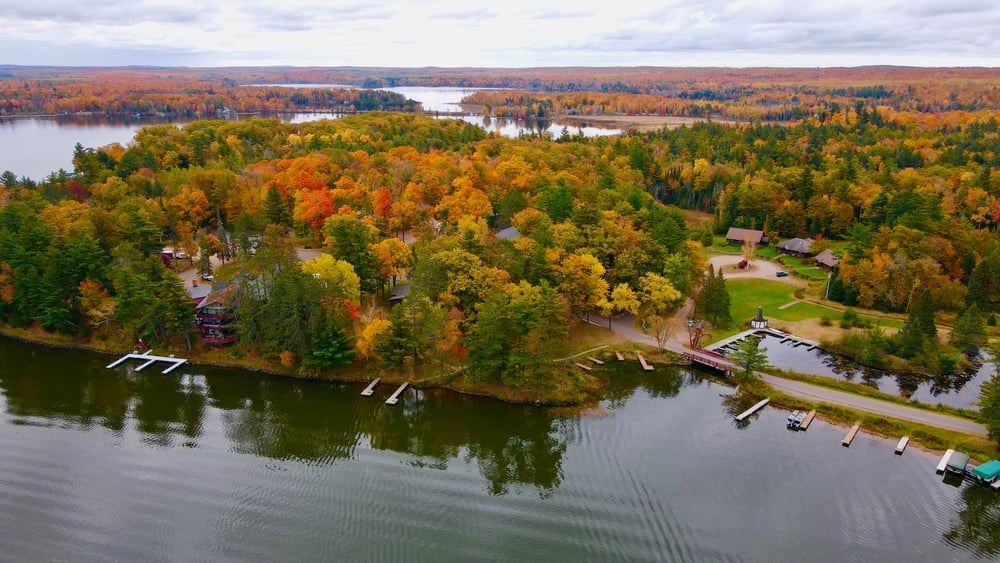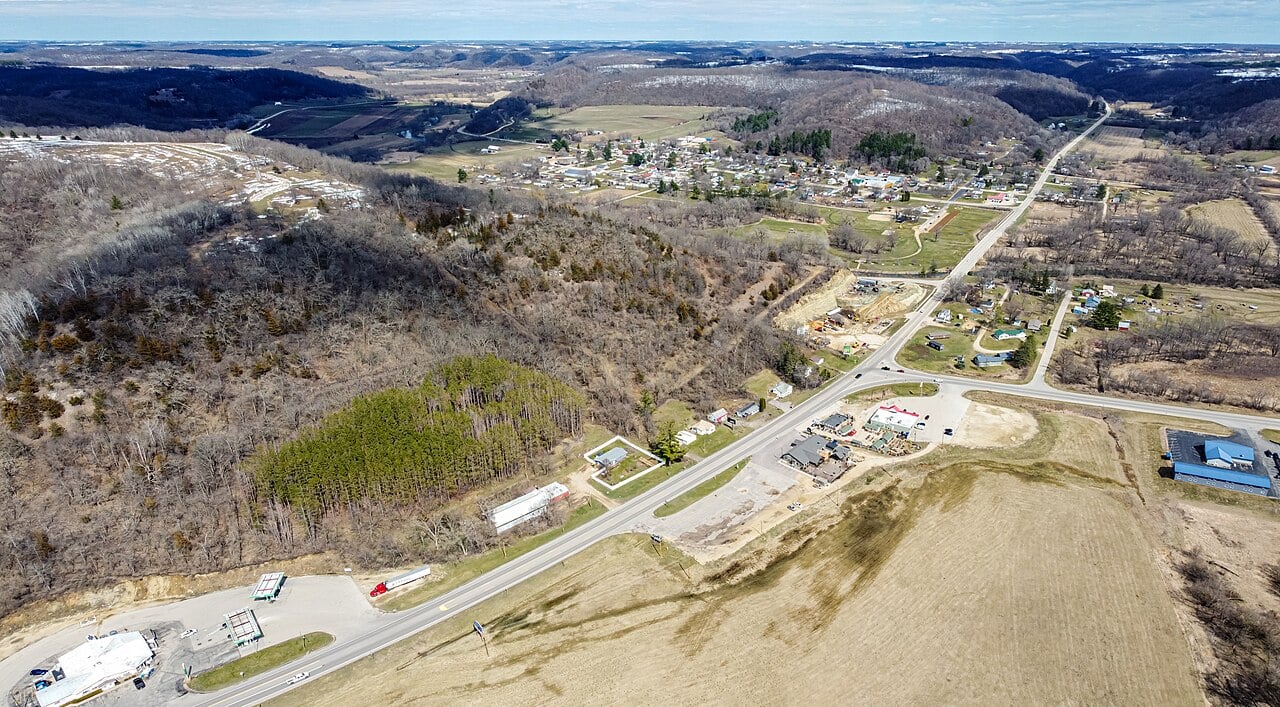
Best counties to live in Wisconsin
More counties in the United States experienced population growth in the last year, according to the latest Census data, even as pandemic-related moving trends begin to normalize.
Counties in the South continued to experience growth, particularly in Florida, where 96% of its 67 counties gained new residents. Polk County, Florida, a suburb of Orlando, added the most, with 26,000 people moving there in 2023.
Meanwhile, counties in the Midwest and Northeast continued to lose population, but at slower rates than the year before. Some of the biggest losses were in counties home to large cities, including Cook County, Illinois (home of Chicago) and the boroughs of Brooklyn and Queens in New York.
Many counties are experiencing growth due to their job opportunities, education, or relatively affordable housing costs. Others are favored for their historic or well-designed downtowns or access to cultural opportunities.
Stacker compiled a list of the best counties to live in Wisconsin using rankings from Niche. Niche ranks counties by various factors including public schools, educational attainment, cost of living, and housing.
Keep reading to see if your county made the list.
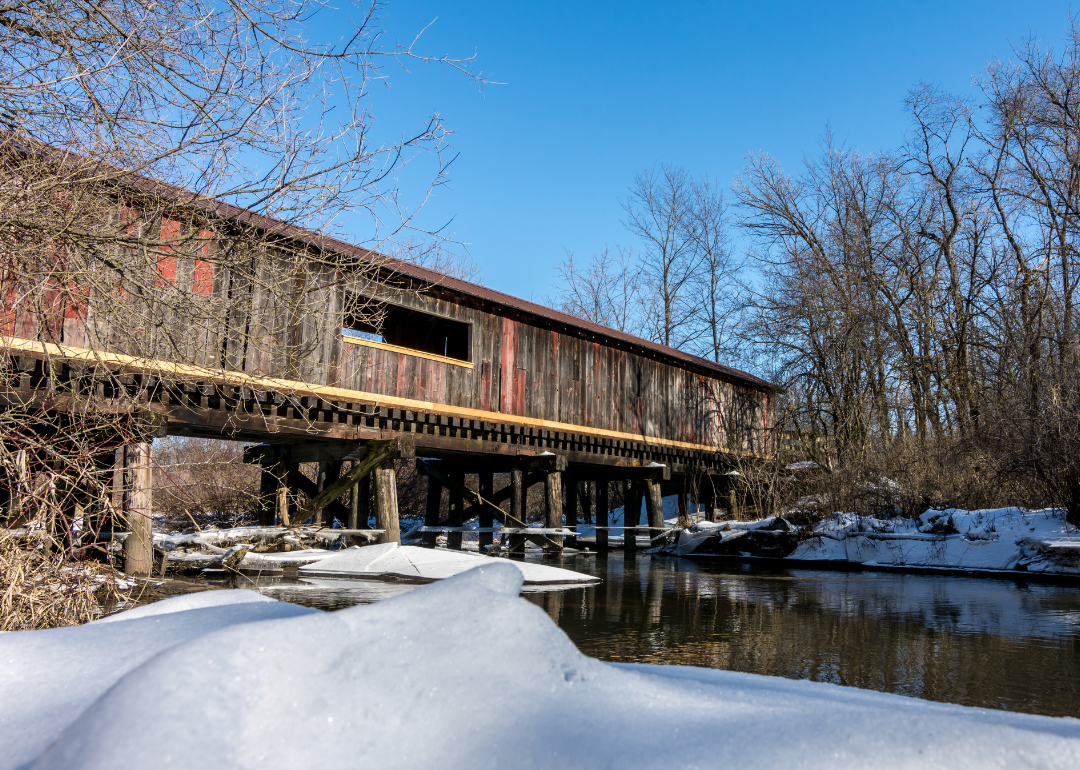
#30. Green County, Wisconsin
– Overall Rank: 1,133
– Population: 37,066
– Median household income: $76,080
– Median home value: $217,000 (75% own)
– Median rent: $820 (25% rent)
– Top public schools: New Glarus Elementary School (grade A minus), New Glarus Middle School (grade B+), Juda High School (grade B+)
– Top private schools: St. Victor School (grade unavailable), Pleasant View Mennonite School (grade unavailable)
– Top places: Brooklyn (grade A minus), Monroe (grade B+), Brodhead (grade C+)
About
Green County is anchored by its largest town, Monroe, which is known for its rich Swiss heritage and deep ties to Wisconsin’s dairy industry. The community takes pride in its cheese-making tradition, hosting festivals and local markets that celebrate its agricultural roots. Rolling farmland and small-town charm define the region’s character.
Monroe serves as the social and economic center, offering a mix of local businesses, quality schools, and healthcare services. Residents enjoy access to trails, parks, and year-round outdoor activities, including biking and snowmobiling. Green County blends rural living with a strong sense of community, making it an inviting place for families, farmers, and those seeking a slower pace.
Where is Green County?
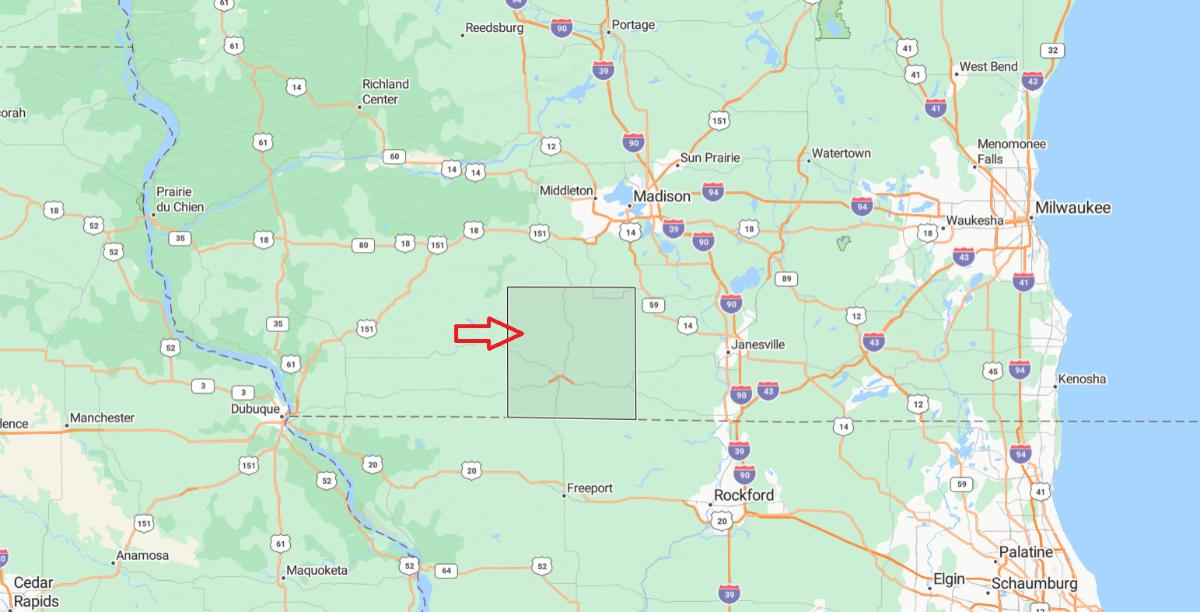
Green County is located in south-central Wisconsin and shares its southern border with Illinois. It lies southeast of Madison and is considered part of the broader Madison metropolitan region.
The county covers roughly 585 square miles and includes a mix of rural towns, villages, and small cities. Its neighbors include Dane County to the north, Rock County to the east, and Lafayette County to the west. Monroe, the largest city and county seat, serves as the central hub for government, commerce, and community events.
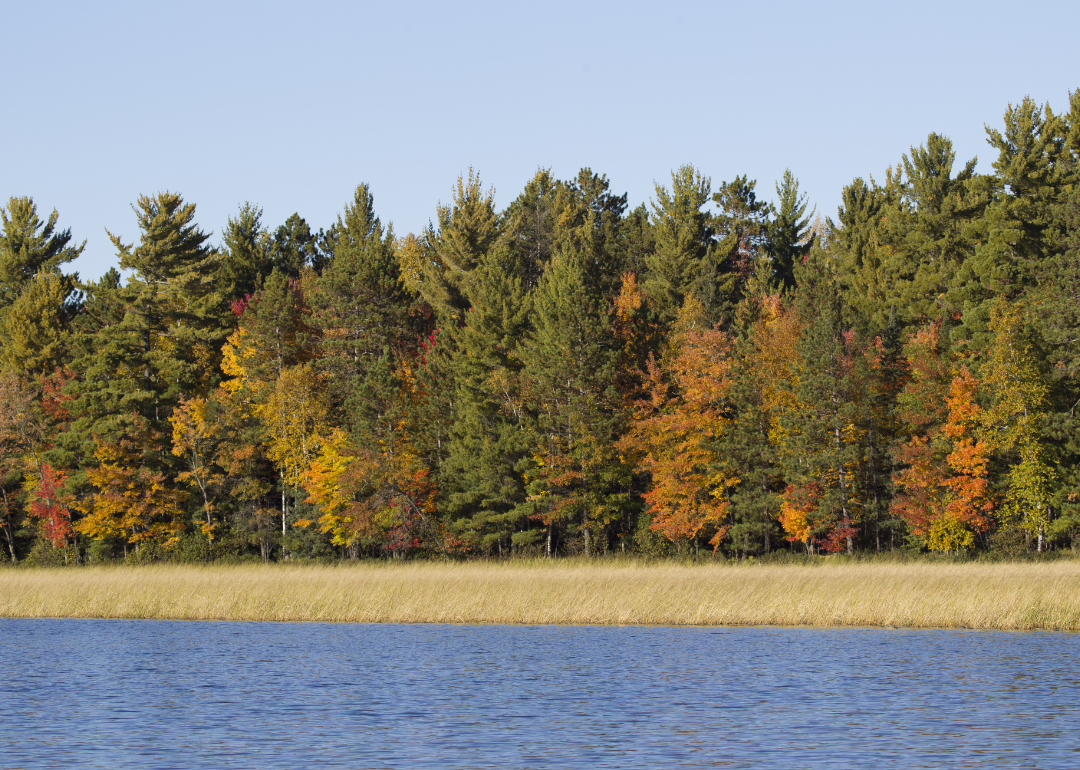
#29. Oneida County, Wisconsin
– Overall Rank: 1,075
– Population: 37,799
– Median household income: $66,111
– Median home value: $214,700 (83% own)
– Median rent: $876 (17% rent)
– Top public schools: Arbor Vitae-Woodruff Elementary School (grade A minus), Lakeland High School (grade B+), Creative Minds (grade B+)
– Top private schools: Nativity of Our Lord School (grade unavailable), Zion Lutheran School (grade unavailable), Trinity Lutheran School (grade unavailable)
– Top places: Rhinelander (grade B+), Woodruff (grade A), Minocqua (grade A minus)
About
Oneida County is known for its expansive forests, pristine lakes, and outdoor recreation opportunities that attract nature lovers, seasonal visitors, and retirees alike. With hundreds of lakes and vast stretches of public land, it offers year-round activities such as fishing, boating, snowmobiling, hiking, and cross-country skiing. Trails like the Bearskin State Trail and scenic drives through Rustic Roads highlight the county’s rich natural beauty, especially during the vibrant fall season. Its calm, low-density setting provides a peaceful atmosphere for both residents and tourists seeking a slower pace of life.
The local culture blends small-town charm with a strong connection to the outdoors. Community events, heritage museums, breweries, and lumberjack shows reflect the region’s history and Northwoods identity. Tourism plays a major role in the economy, supported by cozy lodges, resorts, and seasonal festivals. Institutions like the local airport enhance accessibility, while the combination of natural serenity and recreational variety continues to define Oneida County as a destination for both escape and engagement.
Where is Oneida County?
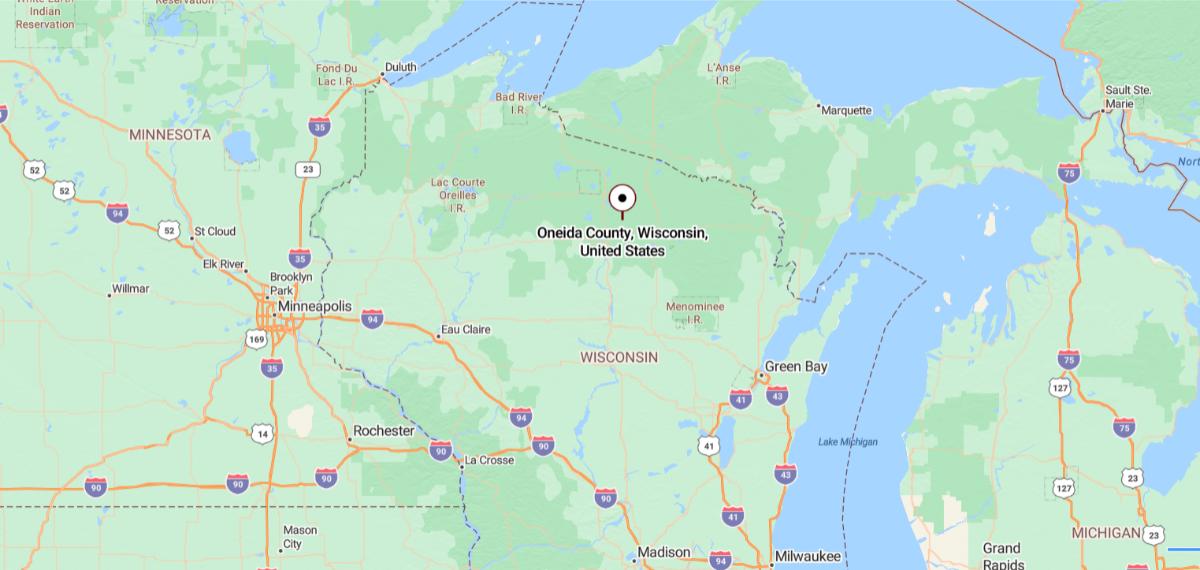
Oneida County is located in the northern region of Wisconsin, within the area known as the Northwoods. It spans about 1,236 square miles, with over 1,100 square miles of land and more than 120 square miles of lakes and rivers. The county seat is Rhinelander, which lies approximately 190 miles north of Madison and 85 miles northeast of Wausau. Major highways like U.S. Routes 8, 45, and 51 run through the area, providing easy access to surrounding counties. Its landscape is dominated by forests, wetlands, and over 400 named lakes.
The county is known for its outdoor recreational opportunities, including boating, fishing, hunting, and snowmobiling. Rhinelander–Oneida County Airport offers regional flights, helping connect the area to larger cities. Oneida County is a popular destination for seasonal visitors and retirees due to its peaceful setting and natural beauty. It shares borders with Vilas, Forest, Langlade, Lincoln, and Price counties. With a population of around 38,000, the county blends small-town life with abundant wilderness.
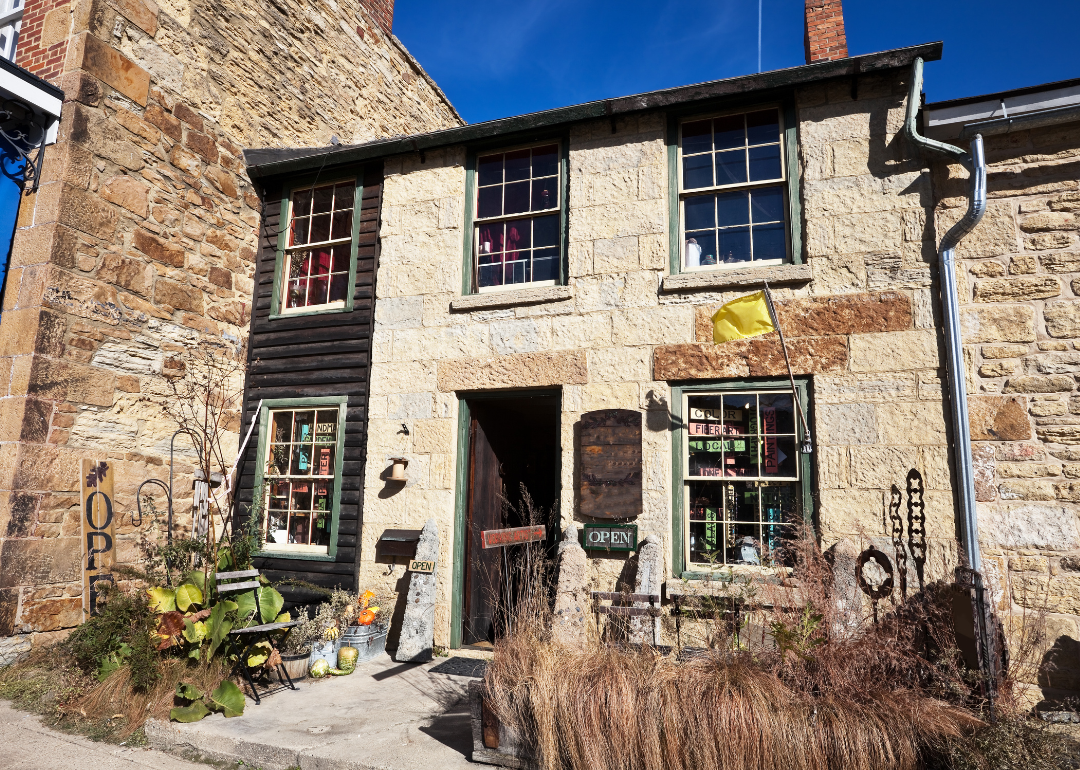
#28. Iowa County, Wisconsin
– Overall Rank: 1,015
– Population: 23,766
– Median household income: $79,226
– Median home value: $231,300 (78% own)
– Median rent: $911 (22% rent)
– Top public schools: Barneveld Elementary School (grade A), Mineral Point Middle School (grade A minus), Mineral Point Elementary School (grade B+)
– Top private schools: St. Joseph Elementary School (grade unavailable)
– Top places: Dodgeville (grade B+), Barneveld (grade A minus), Mineral Point (grade A minus)
About
Iowa County is a rural region rich in history, natural beauty, and cultural character. Its landscape features rolling hills, oak savannas, prairies, and scenic rivers like the Wisconsin and Pecatonica, making it ideal for outdoor activities such as hiking, camping, fishing, and horseback riding. Governor Dodge State Park is a popular destination for nature lovers, while historic towns like Mineral Point offer a glimpse into the area’s mining and pioneer past. The county’s well-preserved architecture, heritage sites, and art galleries reflect its strong ties to early American settlement and craftsmanship.
The economy of Iowa County is a blend of agriculture, small business, light manufacturing, and tourism. Family farms and artisanal producers contribute to the region’s local food and goods, while community events and seasonal festivals celebrate its traditions and foster local pride. Dodgeville serves as the county’s civic and cultural hub, offering services, shopping, and access to regional connections. Overall, Iowa County presents a welcoming mix of rural charm, outdoor recreation, and historical depth.
Where is Iowa County?
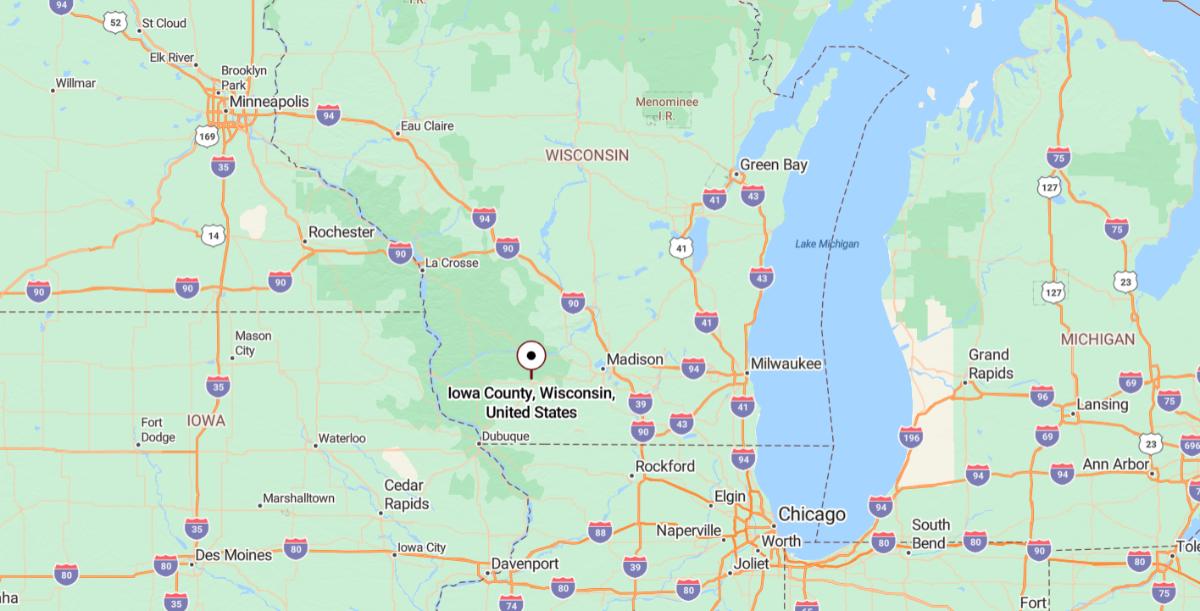
Iowa County is located in the southwestern part of Wisconsin, approximately 60 miles west of Madison, the state capital. It covers about 768 square miles of primarily rolling hills, farmland, and small towns. The county seat is Dodgeville, which sits near the center of the county and serves as a regional hub. U.S. Highway 18 and U.S. Highway 151 run through the county, connecting it to nearby areas like Dubuque, Iowa and Platteville, Wisconsin. The Wisconsin River forms the county’s northern border, adding to its scenic landscape.
Iowa County is part of the Driftless Area, a region untouched by glaciers and known for its rugged terrain and natural beauty. It is home to Governor Dodge State Park, one of Wisconsin’s largest parks, offering camping, hiking, and lakeside activities. The county is bordered by Lafayette, Grant, Richland, Dane, and Sauk counties. Agriculture, tourism, and small businesses make up much of the local economy. With a population of around 23,000, Iowa County blends rural charm with access to natural and cultural attractions.
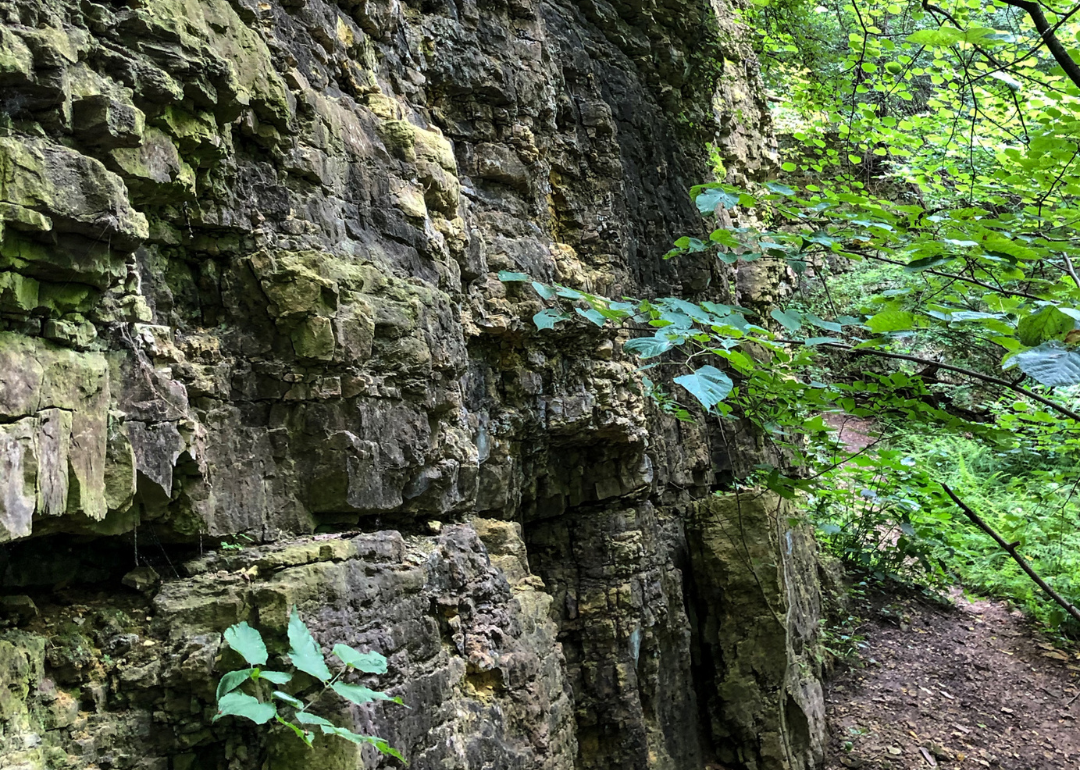
#27. Rock County, Wisconsin
– Overall Rank: 898
– Population: 163,817
– Median household income: $70,630
– Median home value: $193,000 (70% own)
– Median rent: $981 (30% rent)
– Top public schools: Roosevelt Elementary School (grade A minus), Monroe Elementary School (grade A minus), Harmony Elementary School (grade A minus)
– Top private schools: Rock County Christian School – Janesville (grade B+), Oakhill Christian School (grade B), Rock County Christian School (grade B minus)
– Top places: Milton (grade A minus), Evansville (grade A minus), Edgerton (grade B+)
About
Rock County is a diverse and industrious region known for its strong manufacturing heritage, fertile farmland, and vibrant communities. Cities like Janesville and Beloit serve as economic and cultural centers, offering a mix of industry, commerce, and historic architecture. The county features extensive park systems, riverfront trails, and recreational areas along the Rock River, drawing residents and visitors to its scenic and accessible outdoor spaces. Institutions like the Beloit College and cultural venues such as art centers and theaters enrich the area’s intellectual and creative life.
The local economy is rooted in advanced manufacturing, agribusiness, and logistics, with a growing focus on innovation and workforce development. Rock County has seen ongoing revitalization efforts in its downtown districts, attracting new businesses, breweries, and local eateries while preserving its historic character. Community events, farmers markets, and festivals support a strong sense of local identity and pride. With its strategic transportation links, educational infrastructure, and commitment to growth, Rock County continues to evolve as both a regional hub and a welcoming place to live and work.
Where is Rock County?
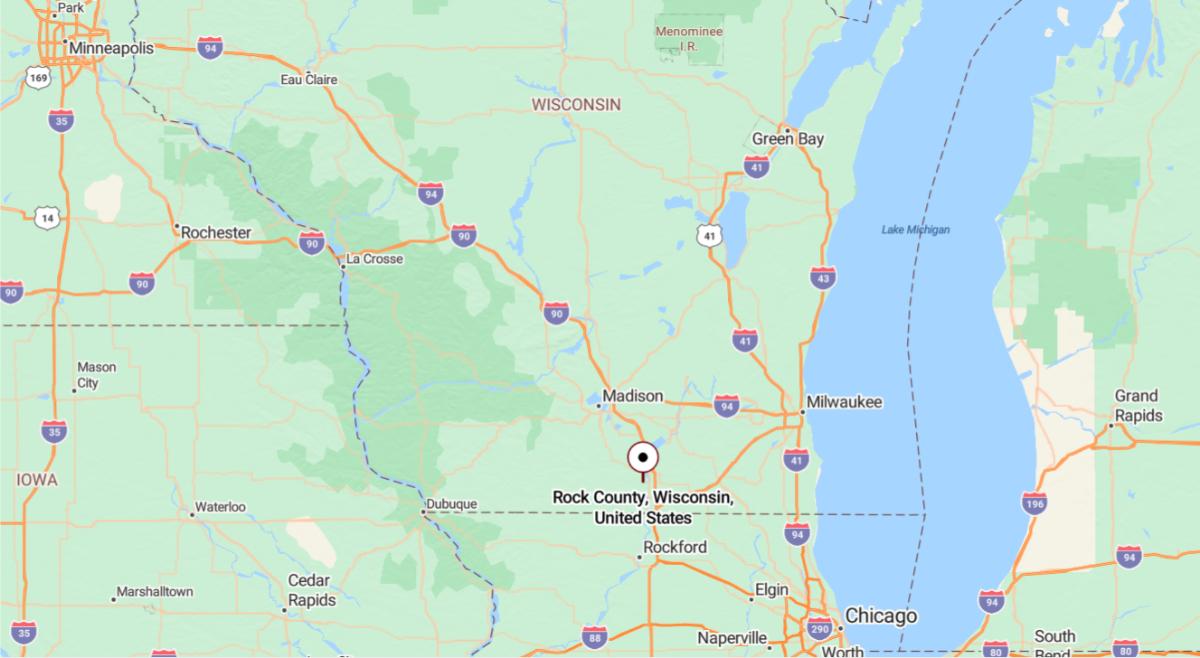
Rock County is located in the southern part of Wisconsin, along the Illinois border. It spans about 726 square miles and lies roughly 45 miles south of Madison and 90 miles northwest of Chicago. The county seat is Janesville, which is also its largest city and a major economic center in the region. Major highways like Interstate 39/90 and U.S. Highway 14 run through the county, providing strong transportation links. The Rock River flows through the area, giving the county its name and shaping its landscape.
Rock County is part of the Madison–Janesville–Beloit metropolitan region and borders Illinois to the south. It includes cities like Beloit and Milton, as well as numerous smaller towns and rural areas. The region has a diverse economy, with strengths in manufacturing, healthcare, education, and agriculture. Outdoor recreation is common, with parks, trails, and riverfront access throughout the county. With a population of over 160,000, Rock County blends urban development with natural and rural surroundings.
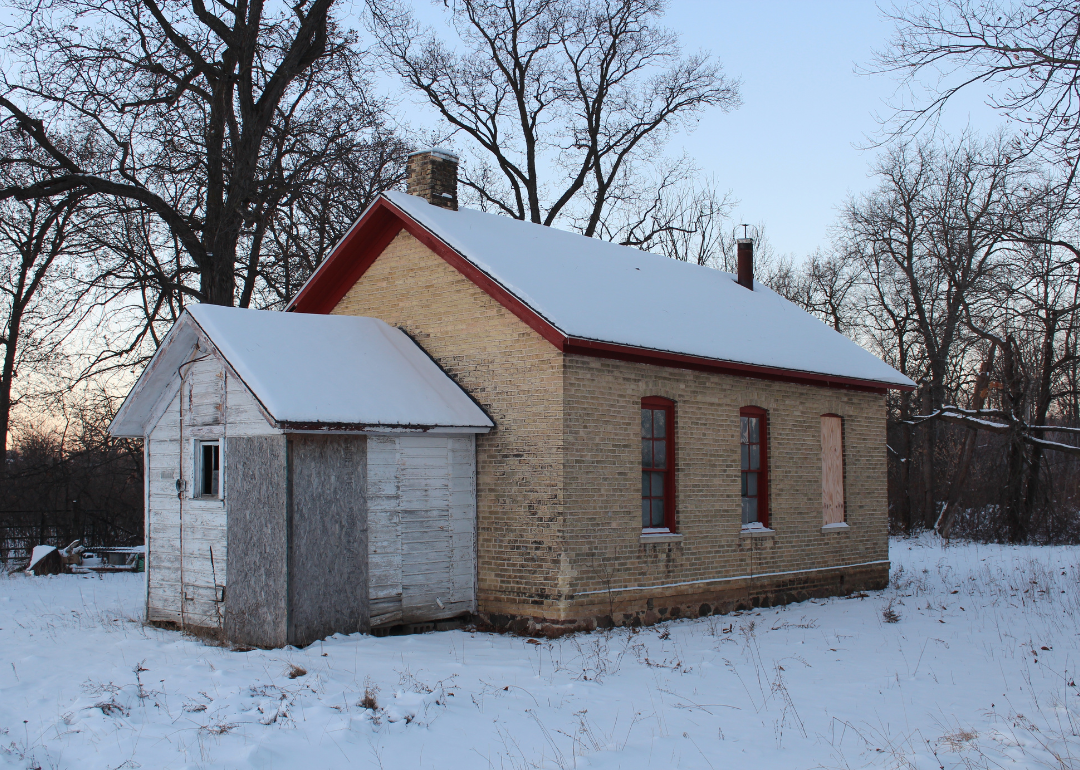
#26. Jefferson County, Wisconsin
– Overall Rank: 884
– Population: 85,932
– Median household income: $77,018
– Median home value: $238,300 (73% own)
– Median rent: $981 (27% rent)
– Top public schools: Webster Elementary School (grade A minus), Lake Mills High School (grade B+), Ixonia Elementary School (grade B+)
– Top private schools: Luther Preparatory School (grade A minus), Lakeside Lutheran High School (grade B), Maranatha Baptist Academy (grade B)
– Top places: Lake Ripley (grade A), Lake Mills (grade A minus), Fort Atkinson (grade A minus)
About
Jefferson County blends agricultural tradition with a growing network of small towns and local industries. Its landscape is marked by rolling farmland, wetlands, and river systems like the Rock and Crawfish Rivers, which provide both scenic beauty and recreational opportunities such as paddling, birdwatching, and fishing. Towns like Fort Atkinson and Jefferson serve as cultural and commercial hubs, offering historic downtowns, local theaters, and museums that reflect the region’s strong community values and heritage.
The county’s economy is anchored in farming, food processing, manufacturing, and small business, with a focus on sustainability and regional trade. Local events, county fairs, and farmers markets highlight its agricultural roots, while trails, parks, and wildlife areas support a robust outdoor lifestyle. Educational institutions and civic engagement programs contribute to a high quality of life, making Jefferson County a balanced mix of rural charm, economic activity, and community-oriented living.
Where is Jefferson County?

Jefferson County is located in southeastern Wisconsin, positioned between the cities of Madison and Milwaukee. It spans about 583 square miles and lies roughly 35 miles east of Madison and 50 miles west of Milwaukee. The county seat is Jefferson, while Watertown and Fort Atkinson are among its larger cities. Major highways like Interstate 94 and U.S. Highway 18 run through the county, providing easy access to nearby regions. The Rock and Crawfish Rivers flow through the area, adding to its scenic character.
The county is part of the Milwaukee–Waukesha–West Allis metropolitan statistical area and includes a mix of farmland, small towns, and growing suburbs. It shares borders with Dane, Waukesha, Walworth, Dodge, and Rock counties. Jefferson County is known for outdoor recreation, including boating, fishing, and biking along its river trails and parks. Agriculture, manufacturing, and retail trade form the backbone of the local economy. With a population of around 85,000, it offers a balance of rural charm and urban accessibility.
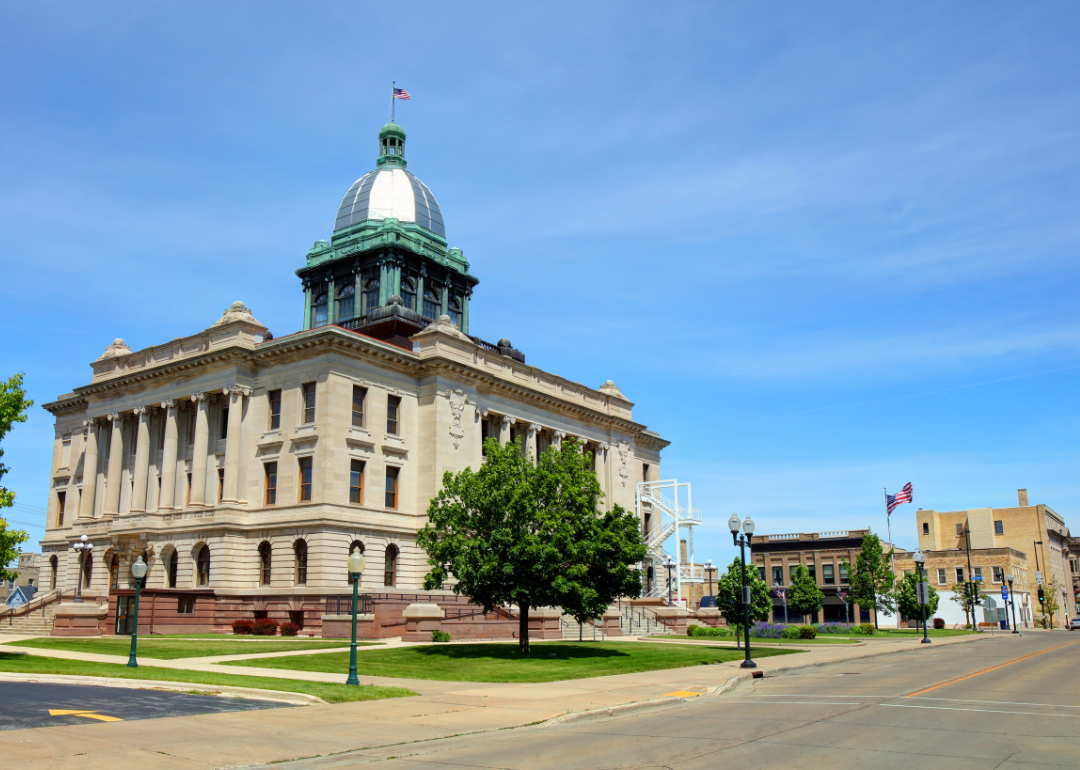
#25. Manitowoc County, Wisconsin
– Overall Rank: 815
– Population: 81,242
– Median household income: $66,412
– Median home value: $160,400 (76% own)
– Median rent: $747 (24% rent)
– Top public schools: Mishicot Middle School (grade A minus), Cleveland Elementary School (grade A minus), Kiel Middle School (grade B+)
– Top private schools: Roncalli High School (grade B+), Manitowoc Lutheran High School (grade B+), Roncalli Elementary School (grade unavailable)
– Top places: Manitowoc (grade B+), Kiel (grade B), Two Rivers (grade B)
About
Manitowoc County is a lakeside region known for its maritime heritage, industrial strength, and natural beauty along the western shore of Lake Michigan. The city of Manitowoc, the county seat, features a working harbor, maritime museum, and a rich shipbuilding history, including World War II submarine construction. The area offers miles of lakefront access, beaches, lighthouses, and parks, supporting recreational activities like sailing, fishing, and biking along scenic trails such as the Mariners Trail. Inland, the county’s rolling countryside supports farming communities and charming small towns that reflect its Midwestern character.
The local economy is driven by manufacturing, agriculture, food production, and tourism, with companies ranging from global manufacturers to family-run dairies. Manitowoc County balances industrial innovation with cultural offerings, including music festivals, historical sites, local art galleries, and farmers markets. Educational institutions and community programs support workforce development and civic engagement, while the region’s blend of waterfront living and rural landscapes make it attractive for both residents and visitors seeking a mix of heritage and lifestyle.
Where is Manitowoc County?
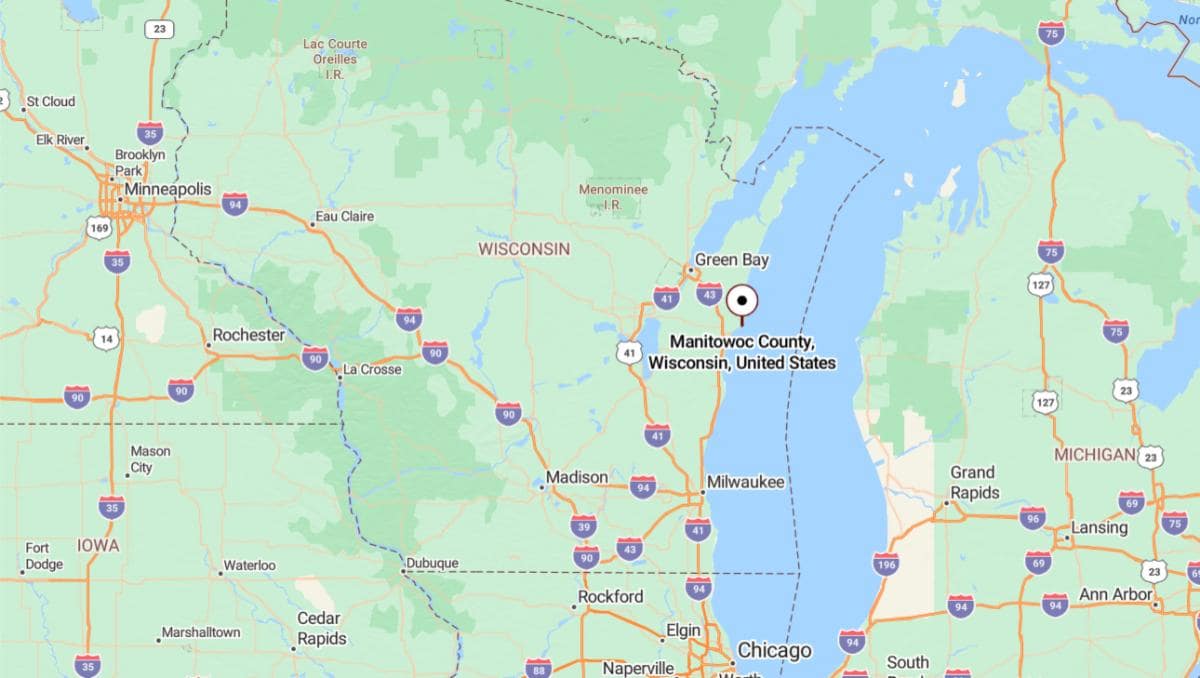
Manitowoc County is located in eastern Wisconsin, along the western shore of Lake Michigan. It covers about 1,494 square miles, including over 590 square miles of land and nearly 900 square miles of water. The county seat and largest city is Manitowoc, situated approximately 80 miles north of Milwaukee and 40 miles southeast of Green Bay. Major highways such as Interstate 43 and U.S. Highway 10 run through the county, offering convenient regional access. Its location on Lake Michigan makes it a hub for shipping, industry, and tourism.
The county features a mix of agricultural land, small towns, and waterfront communities. It borders Calumet, Brown, Kewaunee, Sheboygan, and Fond du Lac counties. Outdoor recreation is popular, with opportunities for boating, fishing, hiking, and visiting the nearby Ice Age National Scenic Trail. Manitowoc County also hosts cultural attractions like the Wisconsin Maritime Museum and car ferry service to Michigan. With a population of around 80,000, the county blends lakeside living with a strong manufacturing and agricultural base.
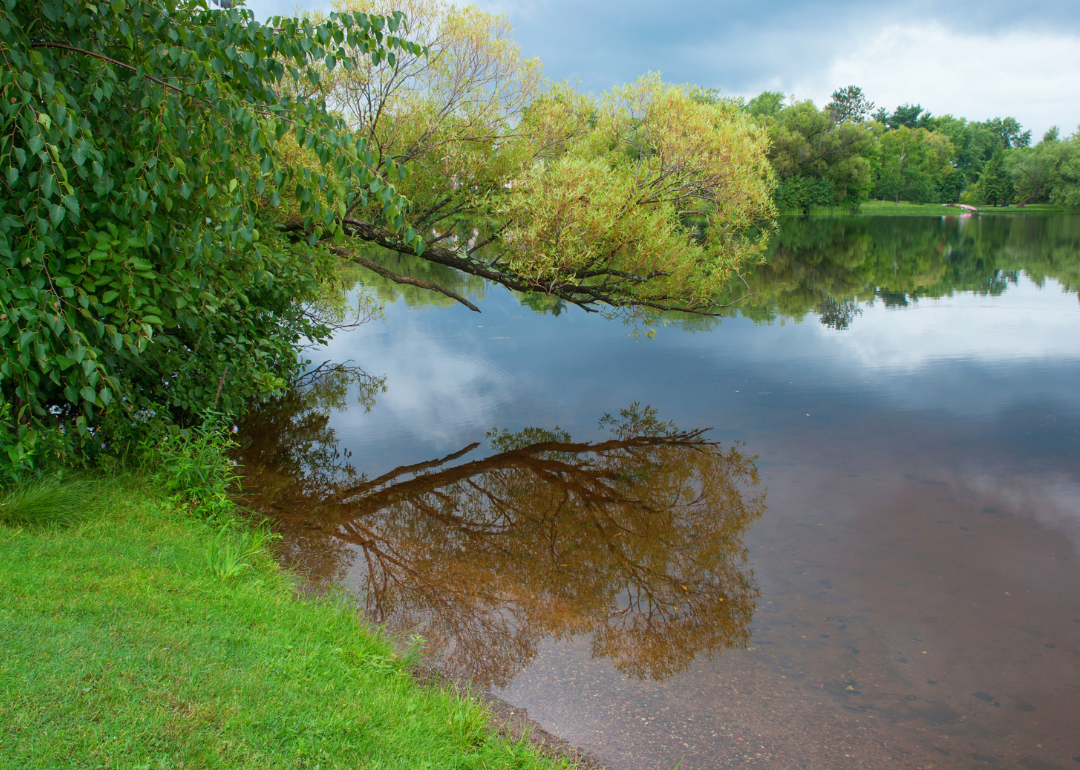
#24. Sawyer County, Wisconsin
– Overall Rank: 773
– Population: 18,057
– Median household income: $57,519
– Median home value: $210,700 (76% own)
– Median rent: $670 (24% rent)
– Top public schools: Winter High School (grade B), Hayward Intermediate School (grade B), Hayward High School (grade B)
– Top private schools: Northern Lights Christian Academy (grade unavailable), Northwoods Mennonite School (grade unavailable), St. Francis Solanus School (grade unavailable)
– Top places: Hayward (grade B), Bass Lake (grade B+), Spider Lake (grade B+)
About
Sawyer County is a vast and rural region known for its scenic natural landscapes, low population density, and outdoor lifestyle. Centered around the town of Hayward, it includes portions of the Lac Courte Oreilles Ojibwe reservation, contributing to its cultural richness and historical depth. The county spans forests, lakes, and wetlands, creating ideal conditions for activities such as boating, fishing, snowmobiling, and hiking. Its serene environment and abundance of public land have made it a popular destination for retirees, seasonal visitors, and those seeking a quiet, nature-focused way of life.
The local economy is supported by tourism, light manufacturing, and service industries, with seasonal recreation playing a major role. Communities like Bass Lake maintain public parks and trail systems that enhance the area’s appeal to outdoor enthusiasts. Hayward serves as the economic and civic hub, offering amenities while retaining small-town character. With a median age over 50 and a focus on natural preservation, Sawyer County maintains a peaceful atmosphere where residents and visitors alike enjoy year-round access to the Northwoods experience.
Where is Sawyer County?
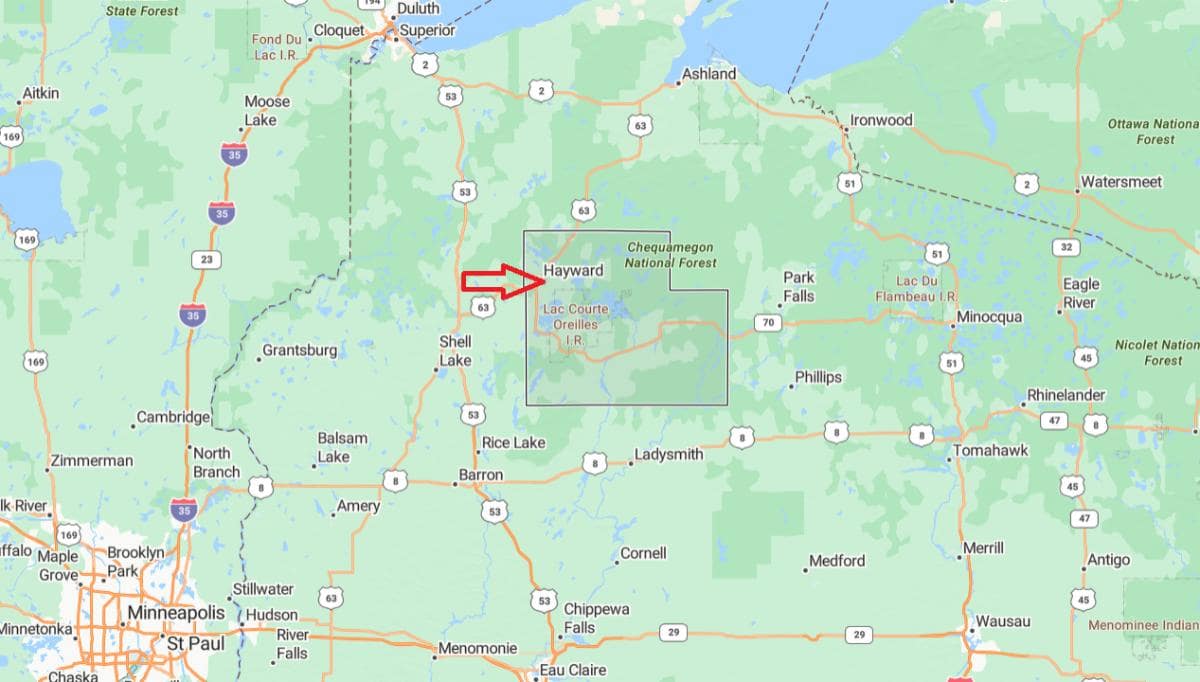
Sawyer County is located in northwestern Wisconsin, in a region known for its forests, lakes, and outdoor recreation. It covers about 1,350 square miles, including more than 300 square miles of water, making it one of the most lake-dense areas in the state. The county seat is Hayward, a small city roughly 80 miles southeast of Duluth, Minnesota, and 150 miles northeast of Eau Claire. Major roads like U.S. Highway 63 and Wisconsin Highway 27 run through the area, connecting it to neighboring counties. The Namekagon River, part of the St. Croix National Scenic Riverway, flows through the county.
Sawyer County is home to large tracts of the Chequamegon-Nicolet National Forest, offering ample opportunities for hiking, camping, and wildlife viewing. It borders Washburn, Bayfield, Ashland, Price, Rusk, and Barron counties. The area is popular for fishing, snowmobiling, and events like the American Birkebeiner ski race. Hayward is a tourism hub, known for attractions like the Fresh Water Fishing Hall of Fame. With a population of around 18,000, the county offers a peaceful, nature-focused lifestyle.

#23. Pierce County, Wisconsin
– Overall Rank: 764
– Population: 42,187
– Median household income: $82,996
– Median home value: $278,700 (74% own)
– Median rent: $999 (26% rent)
– Top public schools: Greenwood Elementary School (grade A minus), Elmwood Elementary School (grade A minus), Malone Elementary School (grade A minus)
– Top private schools: St. Joseph Catholic School (grade unavailable), St. Francis School (grade unavailable), Ave Maria Academy (grade unavailable)
– Top places: Prescott (grade B), Ellsworth (grade B), Clifton (grade B+)
About
Pierce County is a scenic region characterized by rolling hills, fertile farmland, and river valleys that contribute to its agricultural strength and rural charm. The county is known for its proximity to the Mississippi River and the dramatic landscapes of the Driftless Area, offering panoramic views, wooded bluffs, and meandering waterways. Outdoor recreation is abundant, with opportunities for fishing, canoeing, hiking, and birdwatching. Small towns like Ellsworth—known as the Cheese Curd Capital of Wisconsin—serve as cultural and economic hubs, hosting festivals, farmers markets, and local businesses rooted in tradition.
The economy of Pierce County is anchored in agriculture, education, health care, and manufacturing, with a growing emphasis on sustainable farming and regional food production. The county also benefits from its proximity to the Twin Cities metro area, making it attractive for commuters seeking rural living with urban access. Institutions like the University of Wisconsin–River Falls contribute to educational and economic development, while community events, arts programs, and historic sites reflect a strong sense of identity and civic engagement. Pierce County offers a balanced lifestyle grounded in natural beauty, local pride, and steady growth.
Where is Pierce County?
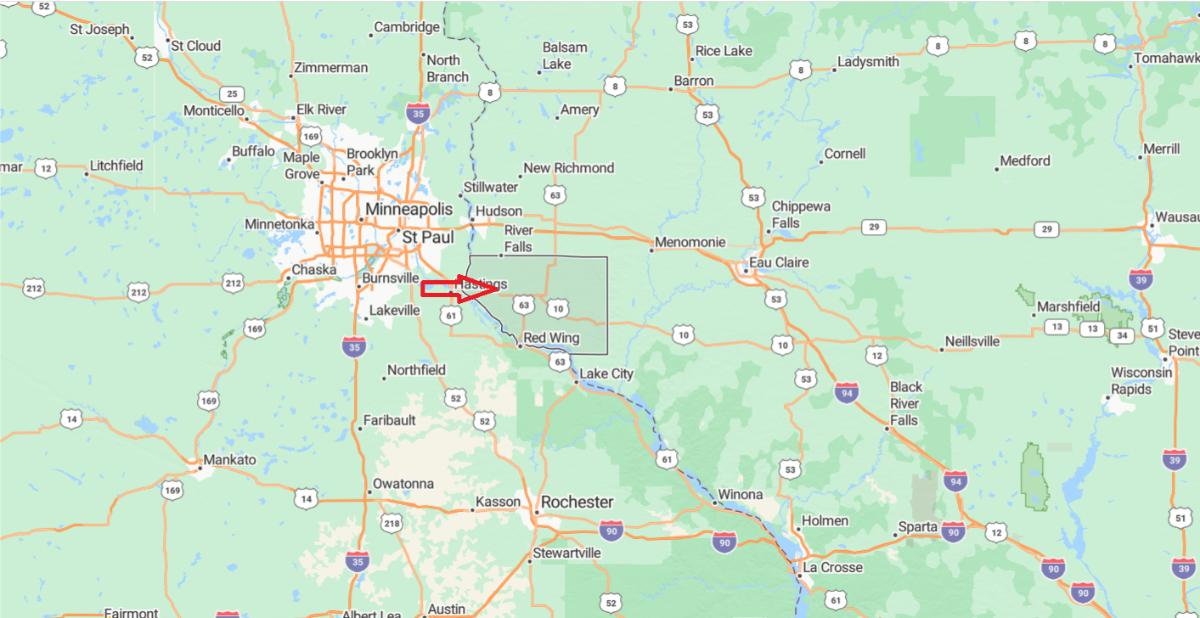
Pierce County is located in western Wisconsin, along the Mississippi River and the Minnesota state border. It covers about 592 square miles and lies approximately 40 miles southeast of the Twin Cities, making it part of the Minneapolis–St. Paul metropolitan area. The county seat is Ellsworth, with other key towns including River Falls and Prescott. Major roads such as U.S. Highway 10 and State Highway 35 run through the county, providing access to nearby cities and rural areas. Its western edge borders the scenic Mississippi and St. Croix Rivers.
Pierce County is known for its rolling farmland, wooded hills, and riverfront communities. It shares borders with St. Croix, Dunn, Pepin, and Buffalo counties in Wisconsin, and Goodhue and Washington counties in Minnesota. The area is popular for outdoor recreation like fishing, boating, and hiking, especially near its river bluffs and parks. River Falls is home to a University of Wisconsin campus, adding a college-town atmosphere to the region. With a population of around 43,000, Pierce County offers a blend of rural charm and suburban convenience near a major metropolitan area.
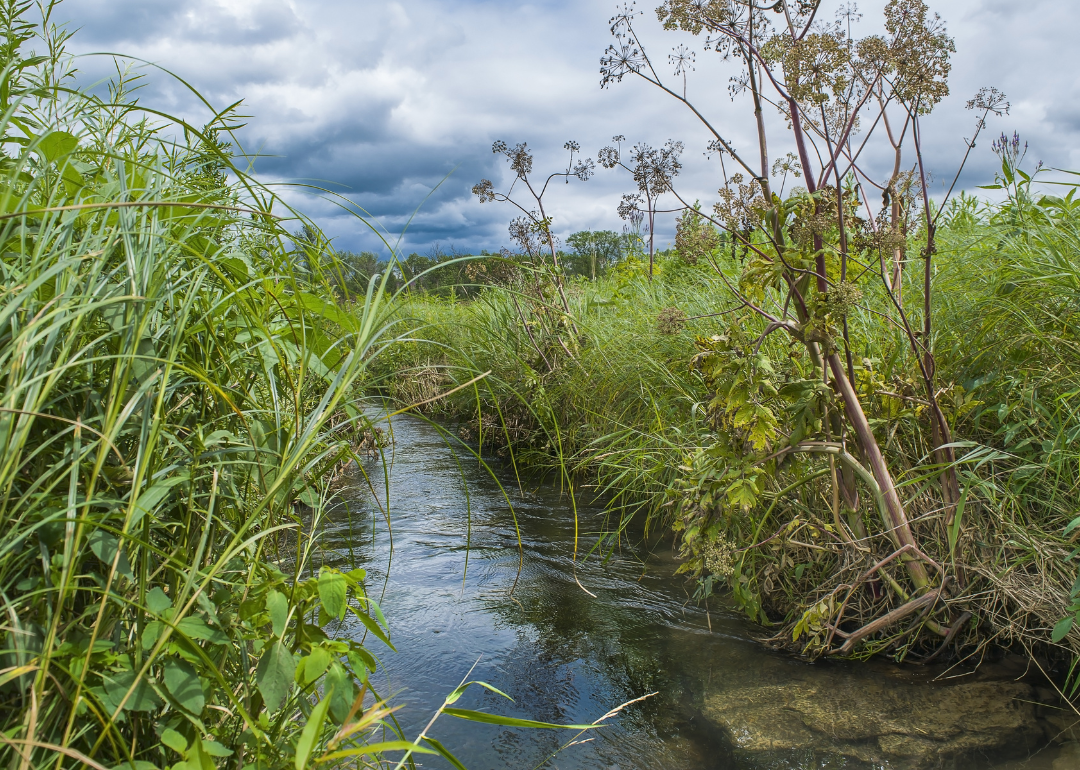
#22. Dunn County, Wisconsin
– Overall Rank: 719
– Population: 45,221
– Median household income: $69,721
– Median home value: $212,000 (66% own)
– Median rent: $908 (34% rent)
– Top public schools: Menomonie High School (grade A minus), Menomonie Middle School (grade B+), Wakanda Elementary School (grade B+)
– Top private schools: St. Paul’s Evangelical Lutheran School (grade unavailable), St. Joseph School (grade unavailable), University of Wisconsin – Stout, Child and Family Study Center (grade unavailable)
– Top places: Tainter Lake (grade A minus), Menomonie (grade A minus), Downsville (grade A)
About
Dunn County offers a harmonious blend of rural charm, natural landscapes, and educational vibrancy. It features rolling farmland, river valleys, and forested areas that support outdoor activities such as hiking, fishing, canoeing, and cross-country skiing. The Red Cedar River and Lake Menomin are focal points for recreation and scenic enjoyment. The city of Menomonie, the county seat, serves as a cultural and economic center, home to the University of Wisconsin–Stout, which brings a dynamic student presence and fosters innovation in technology and design.
The county’s economy is supported by agriculture, education, manufacturing, and small business. Family farms remain vital to the community, producing dairy, grains, and specialty products, while growing enterprises and research initiatives reflect a balance of tradition and progress. Local festivals, historic districts, farmers markets, and art centers contribute to a strong community identity. Dunn County’s combination of natural beauty, academic influence, and active civic life makes it an appealing place for residents, students, and visitors alike.
Where is Dunn County?
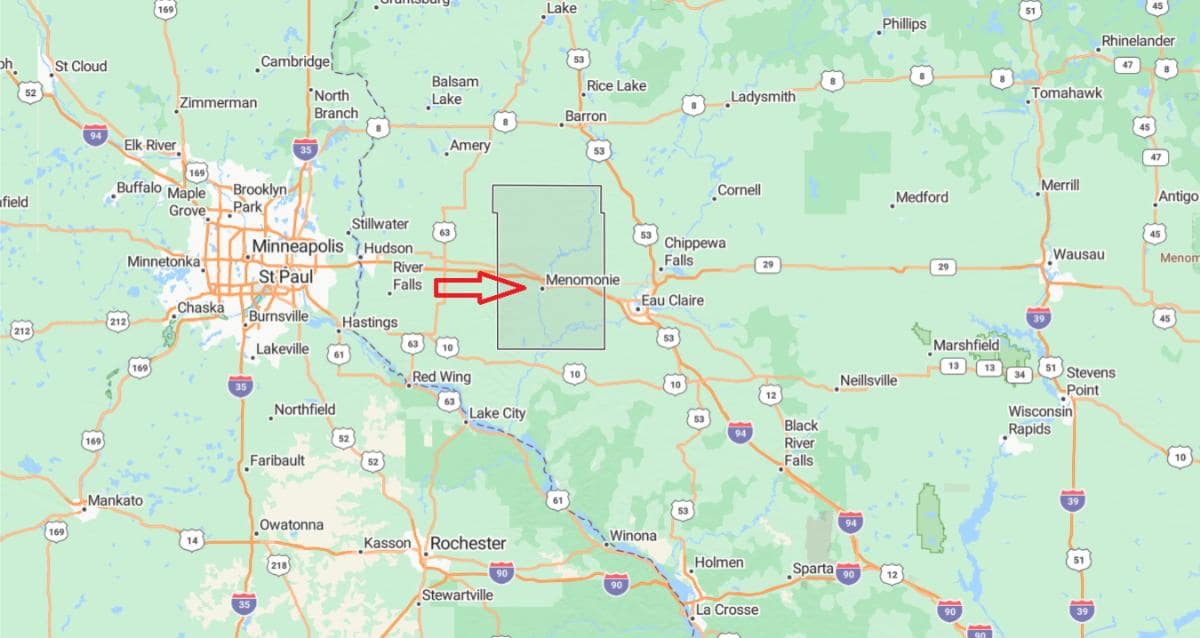
Dunn County is located in west-central Wisconsin, about 70 miles east of the Twin Cities and 25 miles northwest of Eau Claire. It covers roughly 850 square miles of primarily rural and agricultural land. The county seat and largest city is Menomonie, which lies along Interstate 94 and the Red Cedar River. Major routes like I‑94 and U.S. Highway 12 provide strong transportation links across the region. The county’s landscape includes rolling hills, farmland, forests, and several lakes and rivers.
Dunn County is bordered by Barron, Chippewa, Eau Claire, Pepin, Pierce, Polk, and St. Croix counties. It is home to the University of Wisconsin–Stout, located in Menomonie, which contributes to the area’s educational and cultural life. The Red Cedar State Trail and nearby parks support outdoor recreation like biking, fishing, and hiking. Agriculture and education are key parts of the local economy, along with growing residential communities. With a population of around 45,000, Dunn County offers a mix of small-town living and natural beauty in a central location.
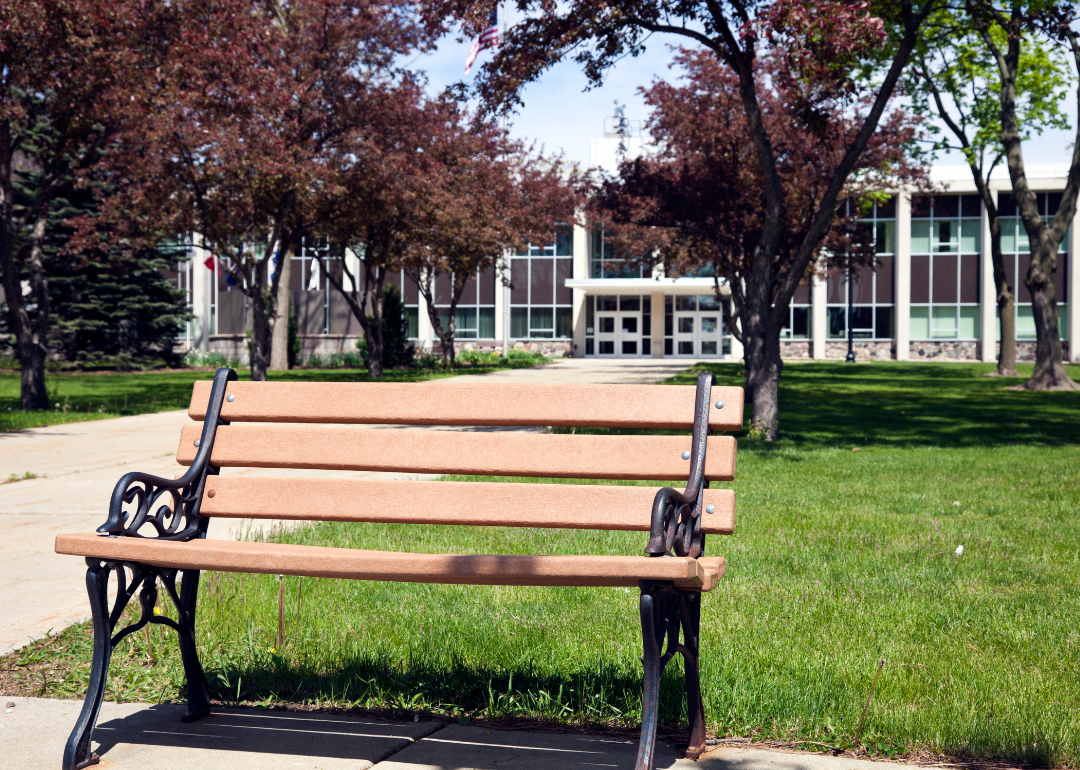
#21. Walworth County, Wisconsin
– Overall Rank: 707
– Population: 105,127
– Median household income: $75,172
– Median home value: $254,300 (70% own)
– Median rent: $1,034 (30% rent)
– Top public schools: Reek Elementary School (grade A), Woods Elementary School (grade A), Tibbets Elementary School (grade A minus)
– Top private schools: Faith Christian School (grade B minus), St. Andrew Parish School (grade unavailable), St. Francis de Sales School (grade unavailable)
– Top places: Lake Geneva (grade A minus), Williams Bay (grade A minus), Elkhorn (grade B+)
About
Walworth County is a region of scenic beauty and economic diversity, known for its lakes, rolling farmland, and vibrant small towns. One of its most iconic destinations is Lake Geneva, a popular year-round resort community that draws tourists with its luxury accommodations, historic estates, and outdoor recreation. The county’s landscape supports a range of activities including boating, golfing, hiking, and winter sports, while rural areas are dotted with orchards, farms, and vineyards that add to its charm. Communities like Elkhorn, Whitewater, and Delavan provide cultural events, local dining, and historic downtowns that reflect the area’s rich Midwestern heritage.
Economically, Walworth County thrives through a combination of agriculture, tourism, manufacturing, and higher education. It is home to the University of Wisconsin–Whitewater, a major academic and cultural institution that contributes to the local workforce and innovation. The county hosts seasonal festivals, art fairs, farmers markets, and outdoor concerts that bring residents and visitors together. With its strong infrastructure, access to major highways, and proximity to both Milwaukee and Chicago, Walworth County offers a well-balanced lifestyle that blends rural tranquility with economic opportunity and cultural vitality.
Where is Walworth County?
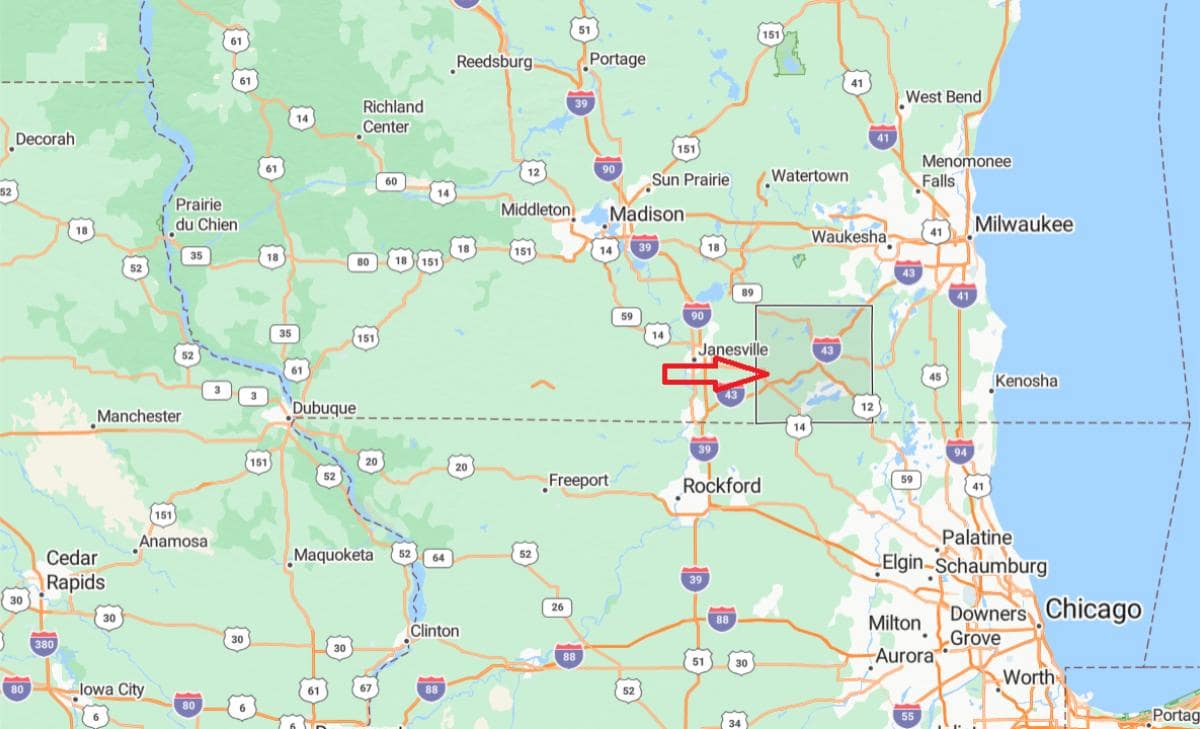
Walworth County is located in southeastern Wisconsin, near the Illinois border, and covers about 577 square miles. The county seat is Elkhorn, while Lake Geneva is one of its most well-known cities and a popular tourist destination. It lies approximately 45 miles southwest of Milwaukee and 80 miles northwest of Chicago. Major highways like U.S. Route 12 and State Highway 50 run through the county, making it easily accessible. The area features rolling farmland, lakes, and resort communities.
Walworth County is bordered by Rock, Jefferson, Waukesha, Racine, and Kenosha counties in Wisconsin, and McHenry County in Illinois. The county is known for its scenic beauty, including Geneva Lake and several parks and campgrounds. It offers year-round recreational activities like boating, golfing, and skiing, especially around Lake Geneva. Agriculture, tourism, and light manufacturing support the local economy. With a population of about 100,000, Walworth County blends rural charm with resort-style amenities.
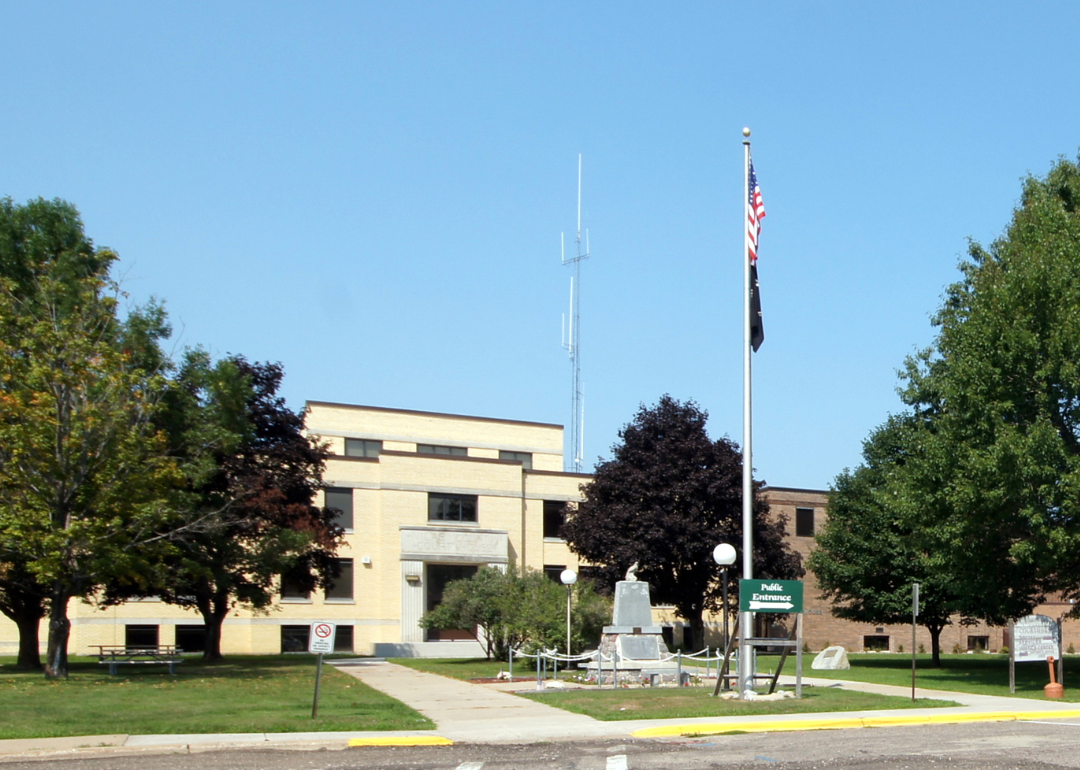
#20. Vilas County, Wisconsin
– Overall Rank: 666
– Population: 23,146
– Median household income: $63,726
– Median home value: $255,700 (83% own)
– Median rent: $766 (17% rent)
– Top public schools: North Lakeland Elementary School (grade A), Northland Pines Elementary – Land O’ Lakes (grade A minus), Northland Pines Elementary – St. Germain (grade A minus)
– Top private schools: Christ Lutheran School (grade unavailable)
– Top places: Arbor Vitae (grade A minus), Presque Isle (grade B+), Boulder Junction (grade B+)
About
Vilas County is renowned for its pristine wilderness, featuring more than 1,300 lakes, extensive forests, and abundant wildlife. It offers year-round recreational opportunities such as boating, fishing, hiking, snowmobiling, and skiing, supported by well-maintained trails and public lands. The city of Eagle River serves as the county seat and is famous for hosting major snowmobile events and providing access to scenic waterways.
The local economy is fueled by tourism, outdoor recreation, and small businesses catering to both residents and seasonal visitors. Communities like Boulder Junction and Lac du Flambeau contribute cultural richness and host events that celebrate the region’s heritage and natural environment. With its peaceful atmosphere and strong connection to nature, Vilas County attracts retirees, vacationers, and outdoor enthusiasts seeking a high quality of life.
Where is Vilas County?
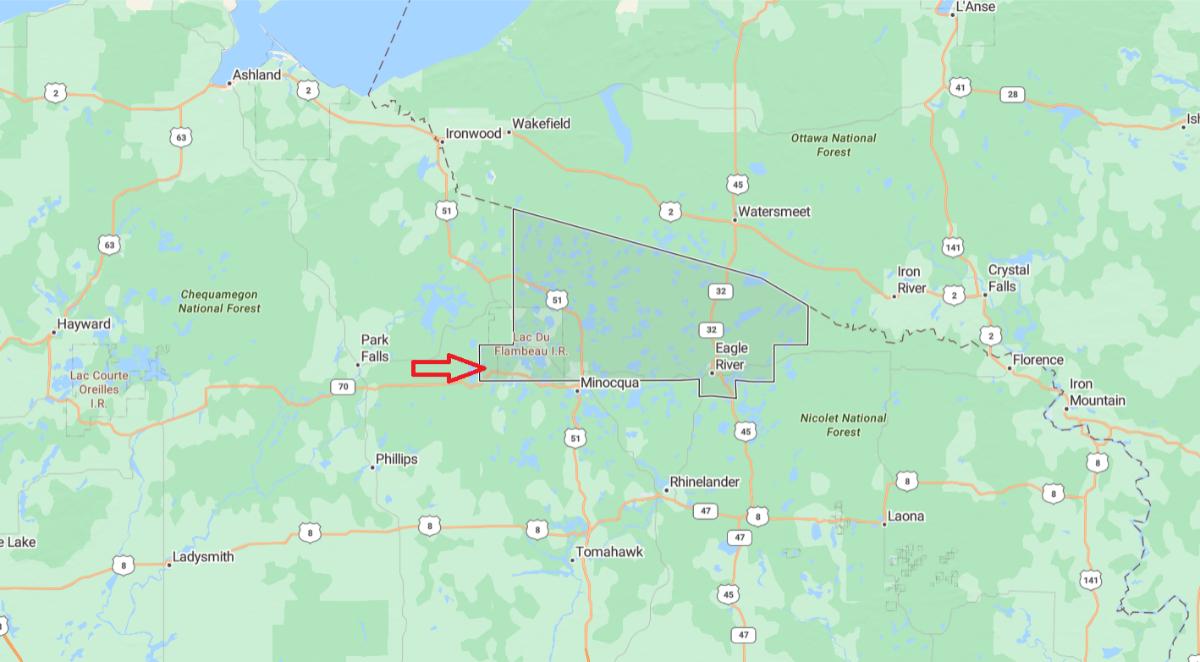
Vilas County is located in the far northern part of Wisconsin, along the border with Michigan’s Upper Peninsula. The county seat is Eagle River, situated about 250 miles north of Madison and surrounded by forests and over 1,300 lakes. Major highways like U.S. Route 45 and State Highway 70 connect the county to nearby regions.
It shares borders with Iron, Oneida, and Forest counties in Wisconsin, and Gogebic and Iron counties in Michigan. Vilas County is known for its outdoor recreation, including fishing, boating, and snowmobiling. With a population of around 23,000, it offers a quiet, nature-rich setting in the Northwoods.
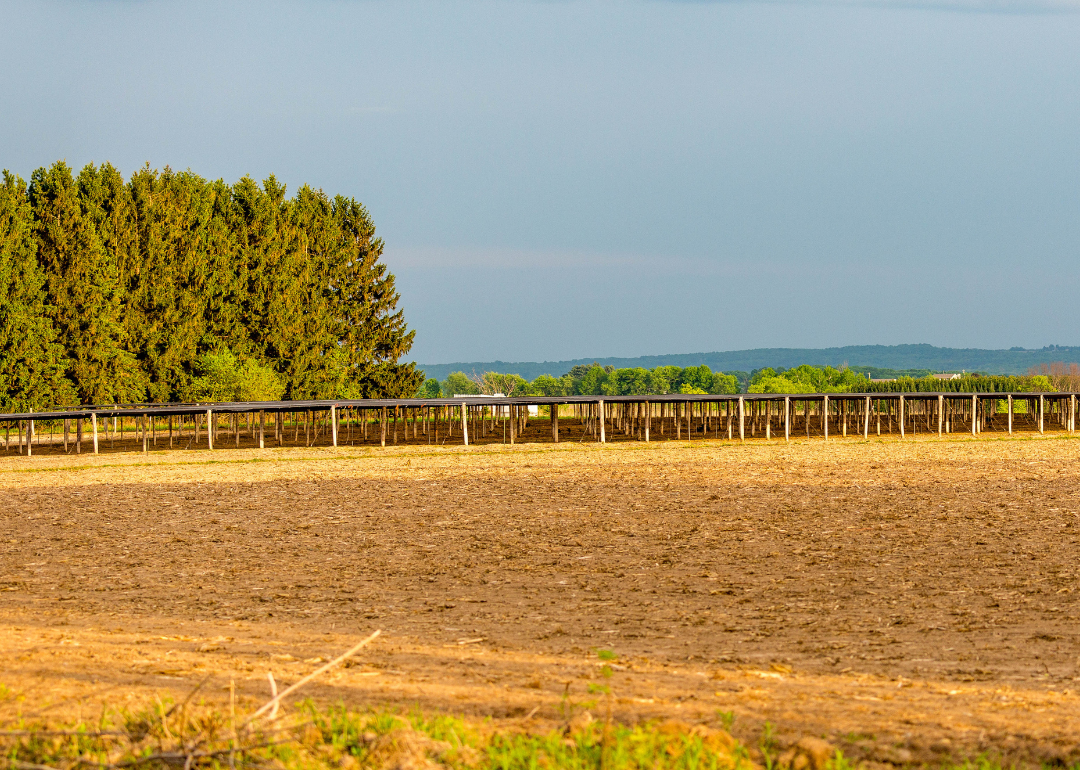
#19. Marathon County, Wisconsin
– Overall Rank: 633
– Population: 137,820
– Median household income: $73,248
– Median home value: $194,500 (73% own)
– Median rent: $898 (27% rent)
– Top public schools: Riverside Elementary School (grade A), Odyssey Elementary School (grade A), West High School (grade A minus)
– Top private schools: Newman Catholic Middle and High School (grade A minus), Northland Lutheran High School (grade B), Abbotsford Christian Academy (grade B)
– Top places: Wausau (grade A minus), Rothschild (grade A minus), Maine (grade A minus)
About
Marathon County is the largest county in Wisconsin by land area and is anchored by the city of Wausau, its cultural and economic center. The county features diverse landscapes, including rivers, forests, and the prominent Rib Mountain, which offers outdoor recreation and scenic views. It also holds a geographic landmark marking the intersection of 45° North and 90° West, one of only four such points in the world.
Outdoor activities are a major part of life in Marathon County, with extensive trail systems, county parks, and areas like Nine Mile Forest offering skiing, biking, and hiking. The local economy is supported by a mix of manufacturing, agriculture, healthcare, and education, creating a balanced and resilient foundation. With its combination of natural beauty, strong infrastructure, and community-focused amenities, Marathon County offers a high quality of life for residents and visitors alike.
Where is Marathon County?
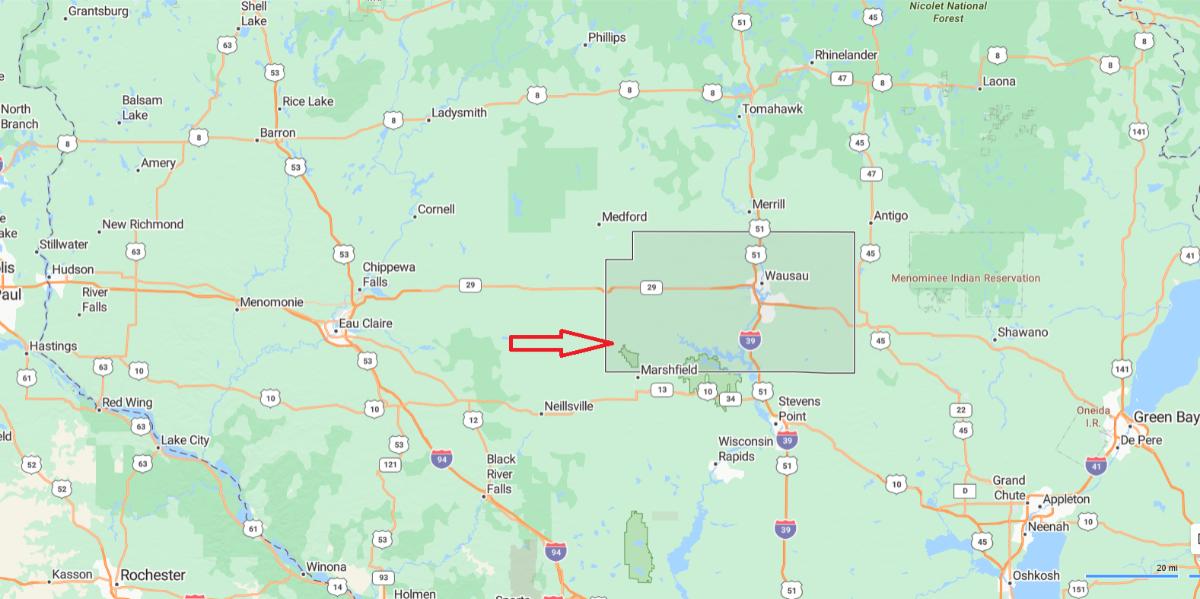
Marathon County is located in central Wisconsin and is the largest county in the state by land area, covering about 1,545 square miles. The county seat is Wausau, which lies roughly 100 miles west of Green Bay and 90 miles north of Madison. Major routes like Interstate 39 and U.S. Highways 51 and 29 pass through the area, making it a regional transportation hub.
It is bordered by several counties, including Lincoln, Langlade, Shawano, and Wood. Marathon County features a mix of forests, farmland, and urban centers, with outdoor activities available year-round. With a population of over 135,000, it is an economic and cultural center in north-central Wisconsin.
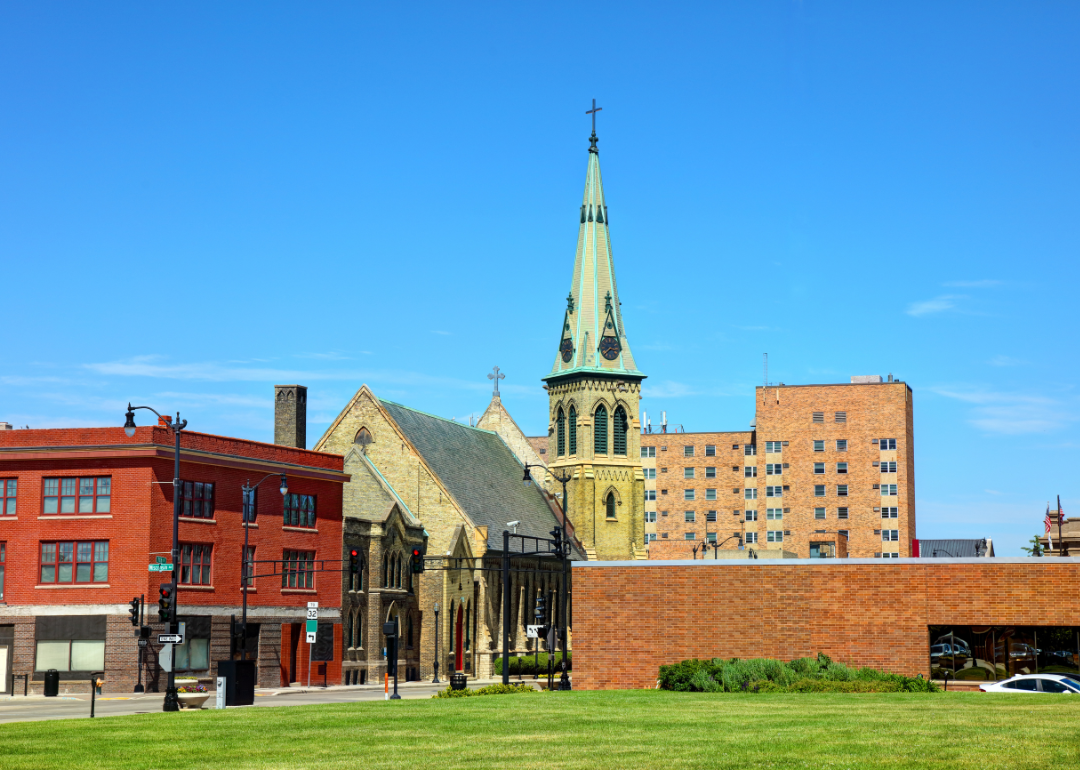
#18. Racine County, Wisconsin
– Overall Rank: 576
– Population: 197,068
– Median household income: $72,658
– Median home value: $226,500 (70% own)
– Median rent: $985 (30% rent)
– Top public schools: Lakeview Elementary School (grade A+), Kansasville Elementary School (grade A), Yorkville Elementary School (grade A)
– Top private schools: The Prairie School (grade A+), Racine Lutheran High School (grade A minus), Catholic Central High School (grade B+)
– Top places: Wind Point (grade A+), Union Grove (grade A), Mount Pleasant (grade A minus)
About
Racine County is a vibrant and diverse region anchored by the city of Racine, its population center and economic engine. The county’s landscape includes both urban and suburban neighborhoods, as well as the scenic shores of Lake Michigan and the Root River, providing a mix of natural and metropolitan appeal. Industry and commerce thrive alongside cultural attractions, contributing to a dynamic community atmosphere.
Economic life in Racine County is driven by manufacturing, healthcare, logistics, and education, with several major employers helping to sustain a skilled regional workforce. Recreation and arts play a key role in residents’ quality of life—riverfront parks, cycling trails, lakeside access, and well-regarded museums offer plenty of leisure opportunities. Throughout the county, lively festivals, historic downtowns, and community initiatives reflect strong civic engagement and local pride.
Where is Racine County?
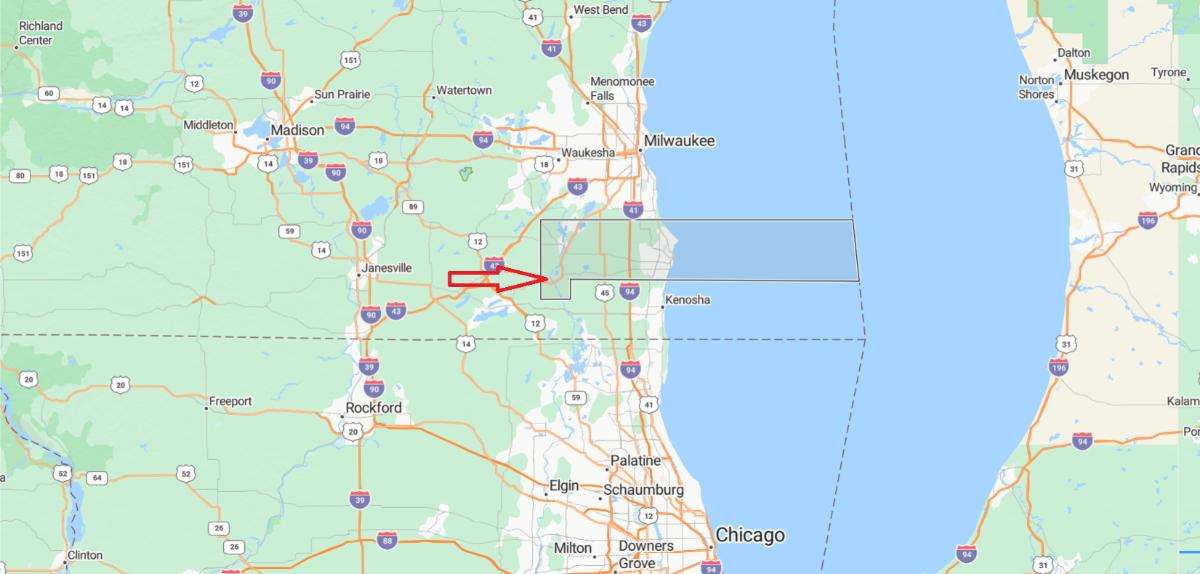
Racine County is located in southeastern Wisconsin, along the western shore of Lake Michigan. The county seat is Racine, situated about 25 miles south of Milwaukee and 60 miles north of Chicago. Major highways like Interstate 94 and State Highway 20 run through the area, providing strong regional connectivity.
The county is bordered by Milwaukee, Waukesha, Walworth, and Kenosha counties. It features a mix of urban, suburban, and rural areas, with lakefront access, parks, and farmland. With a population of over 195,000, Racine County plays a key role in the Milwaukee metropolitan region.
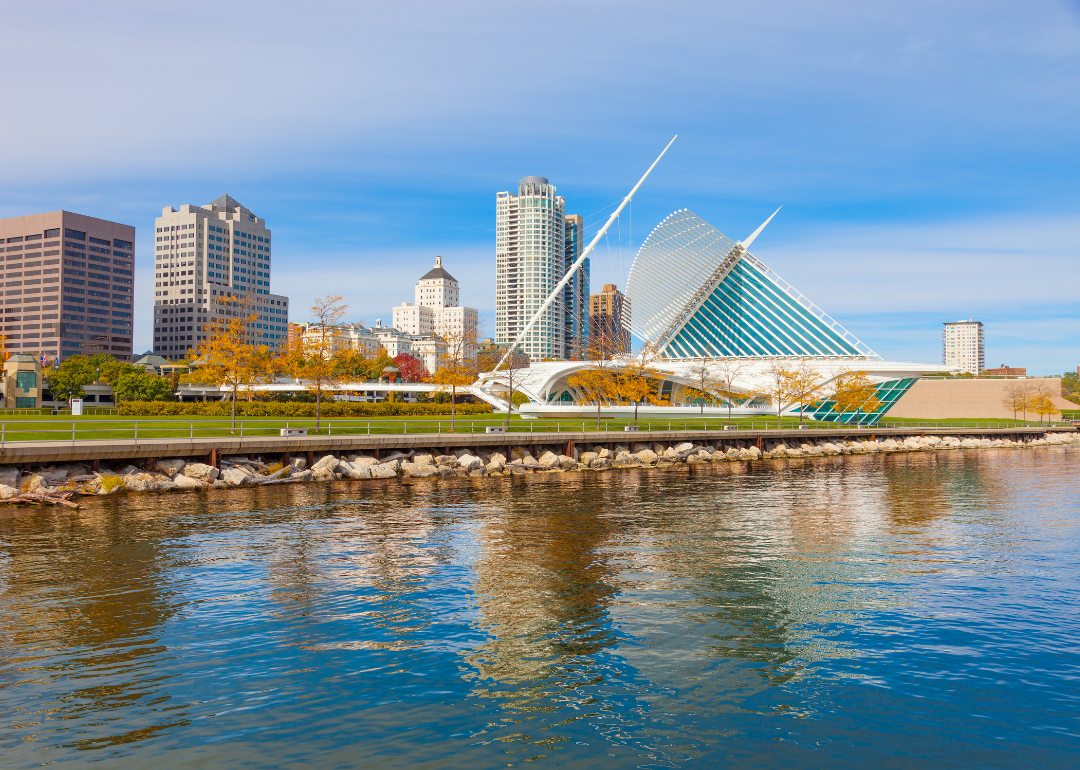
#17. Milwaukee County, Wisconsin
– Overall Rank: 523
– Population: 933,063
– Median household income: $59,319
– Median home value: $200,000 (49% own)
– Median rent: $1,012 (51% rent)
– Top public schools: Shorewood High School (grade A+), Wisconsin Hills Middle School (grade A+), Whitefish Bay High School (grade A+)
– Top private schools: University School of Milwaukee (grade A+), Marquette University High School (grade A+), Eastbrook Academy (grade A+)
– Top places: Whitefish Bay (grade A+), Shorewood (grade A+), Bayside (grade A+)
About
Milwaukee County is the most populous county in Wisconsin and serves as a major cultural, economic, and transportation hub for the state. It includes the city of Milwaukee, known for its vibrant neighborhoods, historic architecture, and strong brewing and industrial heritage. The county also features Lake Michigan shoreline, expansive park systems, and a variety of recreational and cultural venues.
The economy of Milwaukee County is diverse, with major sectors including healthcare, education, finance, manufacturing, and technology. Institutions such as universities, hospitals, and cultural centers contribute to both workforce development and community life. With a rich blend of urban energy, lakefront beauty, and historic depth, Milwaukee County offers a dynamic environment for residents and visitors alike.
Where is Milwaukee County?
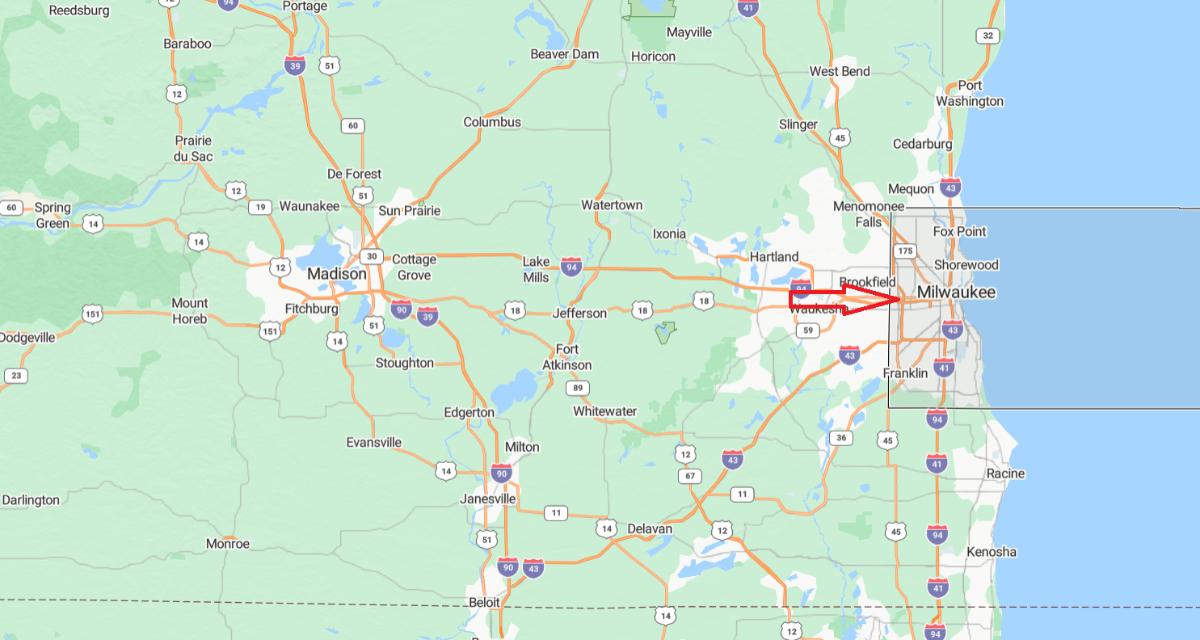
Milwaukee County is located in southeastern Wisconsin, along the western shore of Lake Michigan. The county seat is Milwaukee, the largest city in the state, situated about 90 miles north of Chicago. Major highways like Interstates 43, 94, and 41 pass through the area, making it a major transportation and economic hub.
It is bordered by Waukesha, Ozaukee, and Racine counties. Milwaukee County includes urban neighborhoods, suburban communities, and parklands along the lakefront. With a population of nearly 940,000, it is the most populous county in Wisconsin and a center for culture, business, and education.
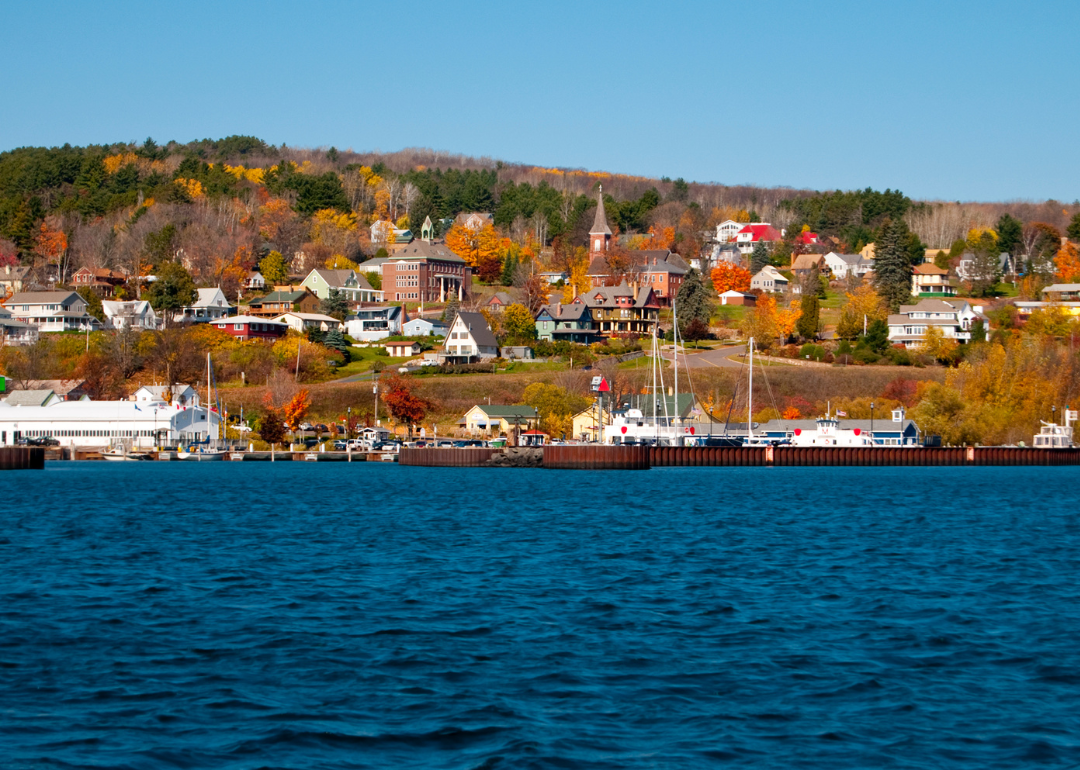
#16. Bayfield County, Wisconsin
– Overall Rank: 492
– Population: 16,214
– Median household income: $67,266
– Median home value: $214,700 (83% own)
– Median rent: $828 (17% rent)
– Top public schools: South Shore Elementary School (grade A), South Shore Junior/Senior High School (grade A minus), Washburn High School (grade B+)
– Top private schools:
– Top places: Bell (grade A), Washburn Town (grade A), Bayview (grade A)
About
Bayfield County is a large, scenic region in northern Wisconsin known for its natural beauty, low population density, and strong Native American cultural presence. The area includes vast forests, inland lakes, and access to Lake Superior, with the county seat located in the city of Washburn. It is home to the Red Cliff Band of Lake Superior Chippewa, whose community contributes significantly to the county’s cultural and economic life.
Tourism and outdoor recreation are central to Bayfield County’s identity, attracting visitors year-round for hiking, boating, fishing, and snow sports. The county includes part of the Apostle Islands National Lakeshore, featuring historic lighthouses, sea caves, and pristine shorelines. Local events like the Bayfield Apple Festival, along with a thriving arts scene and local agriculture, help support a vibrant small-town economy and lifestyle.
Where is Bayfield County?
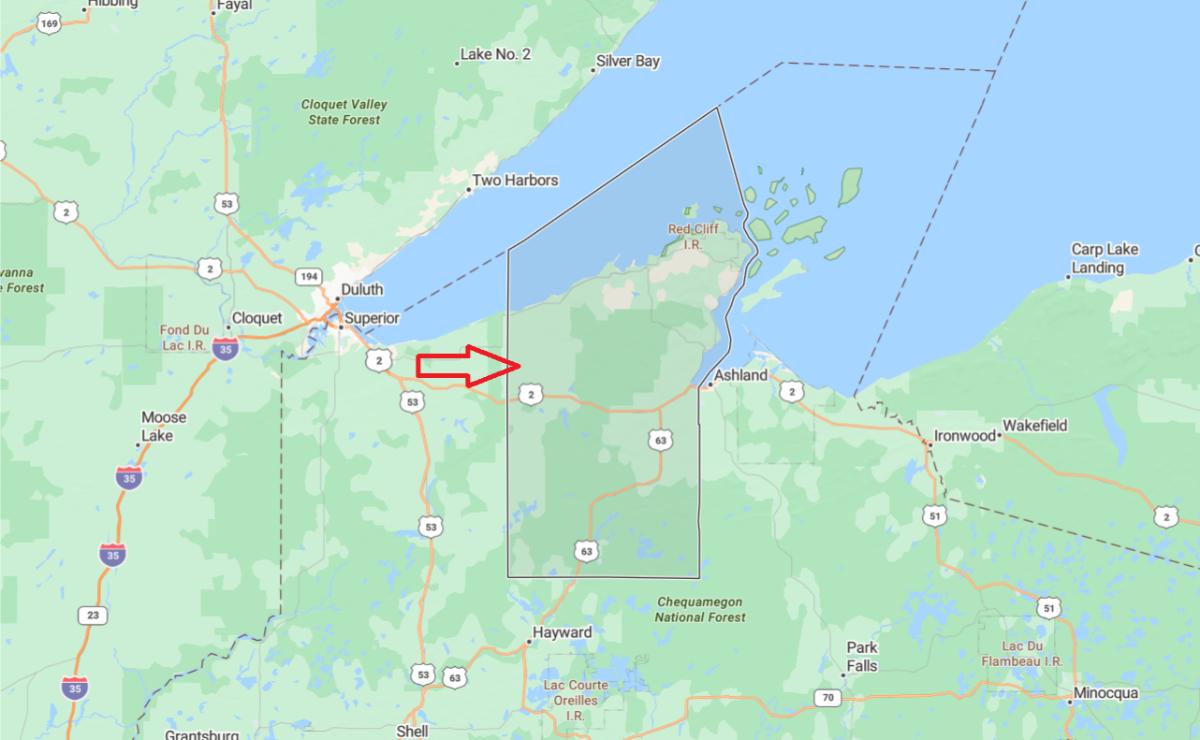
Bayfield County is located in the far northern part of Wisconsin, along the southern shore of Lake Superior. The county seat is Washburn, situated about 85 miles east of Duluth, Minnesota, and 230 miles north of Eau Claire. U.S. Highway 2 runs through the area, providing access to the region’s small towns and forested landscapes.
It is bordered by Ashland, Sawyer, and Douglas counties, and features part of the Chequamegon-Nicolet National Forest. Bayfield County includes the Apostle Islands National Lakeshore, known for its scenic beauty and outdoor recreation. With a population of around 16,000, it offers a quiet, nature-focused lifestyle in Wisconsin’s Northwoods.
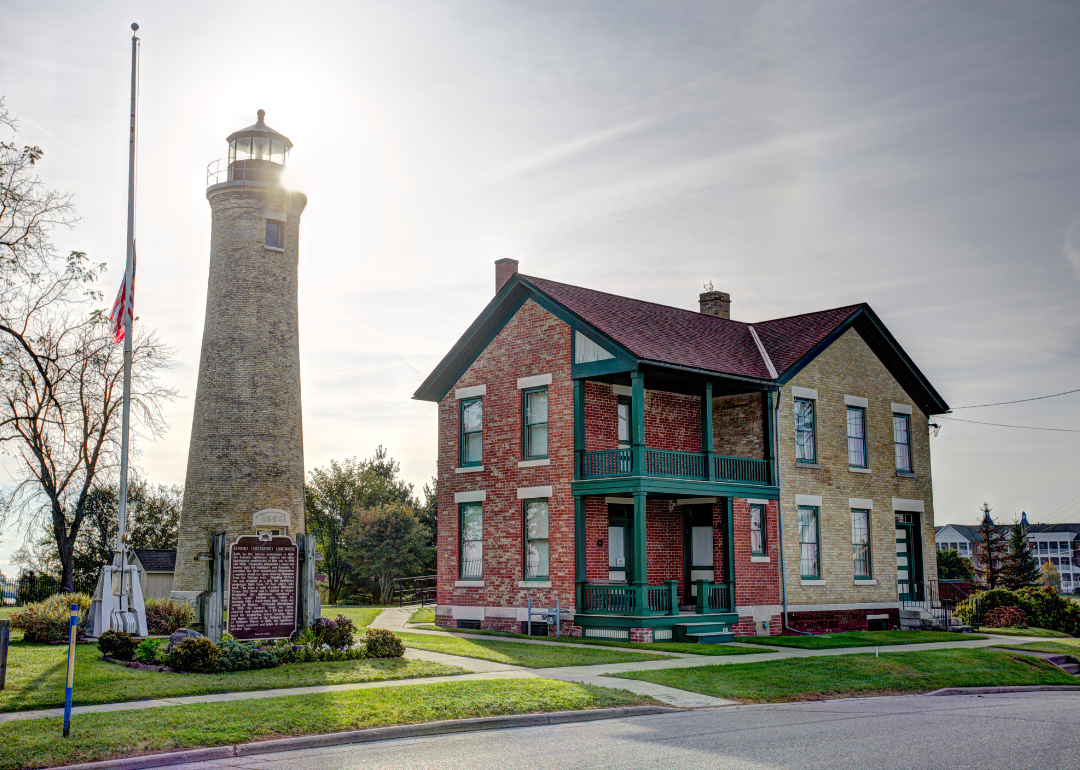
#15. Kenosha County, Wisconsin
– Overall Rank: 461
– Population: 168,693
– Median household income: $76,583
– Median home value: $234,700 (67% own)
– Median rent: $1,110 (33% rent)
– Top public schools: Brighton Elementary School (grade A+), Lakeview Technology Academy (grade A), Riverview Elementary School (grade A)
– Top private schools: Shoreland Lutheran High School (grade A minus), St. Joseph Catholic Academy (grade A minus), Christian Life School (grade B+)
– Top places: Pleasant Prairie (grade B+), Bristol (grade B+), Kenosha (grade B+)
About
Kenosha County, located in southeastern Wisconsin along the shores of Lake Michigan, blends urban, suburban, and rural environments. The county seat, the City of Kenosha, is a historic lakeside city known for its harbor, museums, and manufacturing roots. Kenosha County also benefits from its proximity to both Milwaukee and Chicago, making it a strategic location for commuters and businesses.
The region features a mix of farmland, residential developments, and natural preserves, including popular destinations like Petrifying Springs Park and the Bong State Recreation Area. Education and health care play key roles in the county’s economy, with institutions like the University of Wisconsin–Parkside located nearby. With a growing population and continued investment in infrastructure and community development, Kenosha County balances its industrial legacy with modern suburban growth.
Where is Kenosha County, Wisconsin?

Kenosha County is located in the southeastern corner of Wisconsin, along the western shore of Lake Michigan and bordering Illinois. The county seat is Kenosha, which lies about 40 miles south of Milwaukee and 60 miles north of Chicago. Major highways like Interstate 94 and U.S. Highway 41 provide strong regional connections.
It is bordered by Racine and Walworth counties in Wisconsin and Lake and McHenry counties in Illinois. The county features a mix of urban, suburban, and rural areas, with access to lakefront parks and commuter routes. With a population of over 170,000, Kenosha County is a key part of the Milwaukee–Chicago corridor.
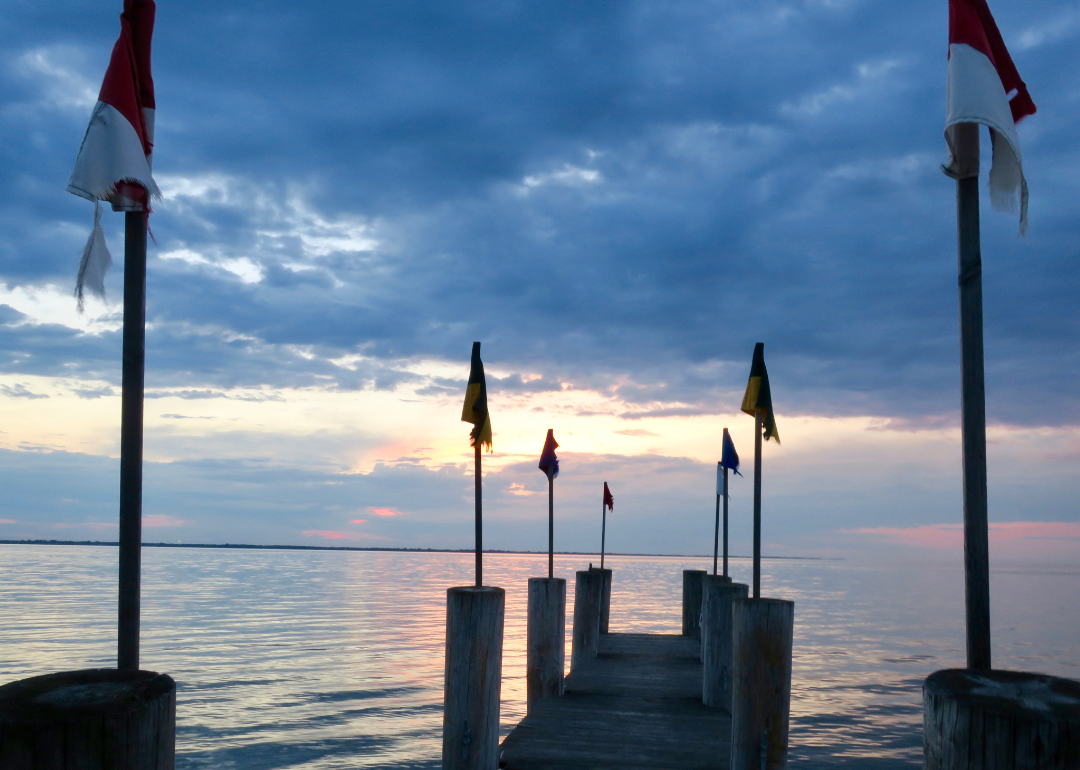
#14. Calumet County, Wisconsin
– Overall Rank: 456
– Population: 52,361
– Median household income: $84,151
– Median home value: $234,000 (81% own)
– Median rent: $948 (19% rent)
– Top public schools: Woodland Intermediate School (grade A), Woodland Elementary School (grade A), Sunrise Elementary School (grade A)
– Top private schools: Trinity Evangelical Lutheran School (grade unavailable), Mt. Cavalry Lutheran School (grade unavailable), Chilton Area Catholic School (grade unavailable)
– Top places: Sherwood (grade A), Chilton (grade B+), Brillion (grade B)
About
Calumet County, nestled alongside Lake Winnebago in east-central Wisconsin, offers a captivating mix of rich agricultural landscapes and charming small towns. The county seat, Chilton, is notable for its historic downtown, community-centered festivals, and scenic riverfront along the Manitowoc River. With a strong agricultural tradition, Calumet County is praised for its dairy farms, crop production, and local food initiatives that bolster both economy and community identity.
The county’s natural attractions include expansive lakefront parks, the bustling Calumet County Park on Lake Winnebago, and miles of scenic bike trails that connect rural spaces and waterfronts. Education and healthcare services are well-established, primarily centered in Chilton and New Holstein, supporting the region’s growing family-oriented population. With steady residential development, thoughtful infrastructure improvements, and a focus on preserving its rural heritage, Calumet County continues to balance progress with tradition.
Where is Calumet County?
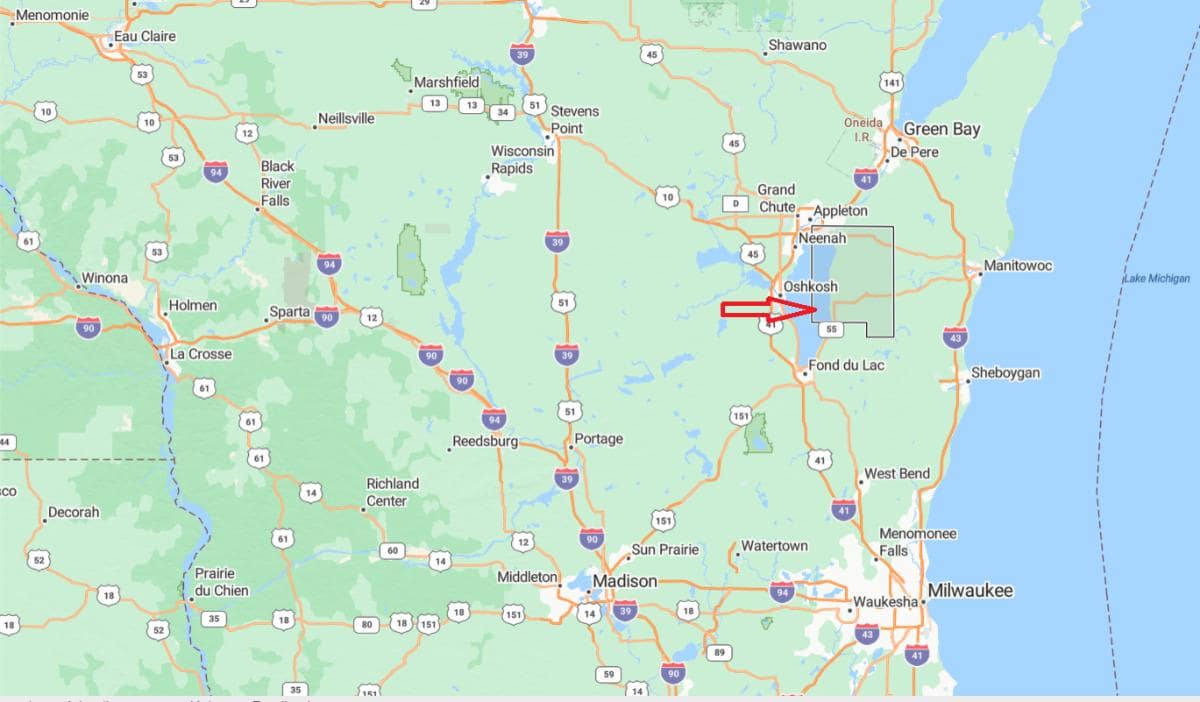
Calumet County is located in east-central Wisconsin, just southeast of Lake Winnebago. The county seat is Chilton, and the area lies about 80 miles north of Milwaukee and 35 miles south of Green Bay. Major highways like U.S. Highway 151 and State Highways 32 and 57 pass through the county, connecting it to nearby urban centers.
It is bordered by Manitowoc, Sheboygan, Fond du Lac, Winnebago, and Outagamie counties. Calumet County features a mix of farmland, small towns, and natural areas, including High Cliff State Park along Lake Winnebago. With a population of around 50,000, the county offers a balance of rural charm and access to regional amenities.
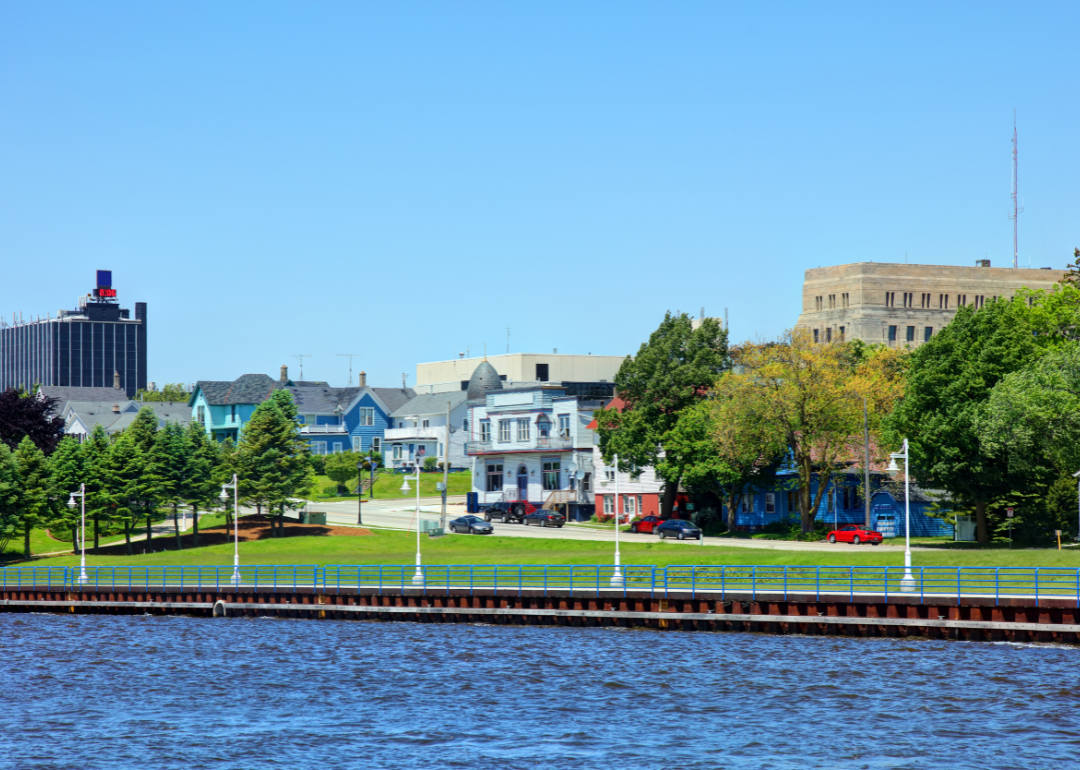
#13. Sheboygan County, Wisconsin
– Overall Rank: 416
– Population: 117,741
– Median household income: $68,969
– Median home value: $198,900 (72% own)
– Median rent: $863 (28% rent)
– Top public schools: Kohler Elementary School (grade A), Kohler Middle School (grade A), Oostburg Middle School (grade A)
– Top private schools: Sheboygan Christian School (grade B+), Sheboygan Lutheran High School (grade B), St. John Lutheran School (grade unavailable)
– Top places: Kohler (grade A+), Sheboygan (grade A minus), Oostburg (grade A minus)
About
Sheboygan County, located along the western shore of Lake Michigan in eastern Wisconsin, blends scenic lakefront communities with vibrant small-city life. The largest city and county seat, Sheboygan, is known for its historic downtown, brewery scene, and as the self‑proclaimed “Bratwurst Capital of the World.” The county combines coastal charm with a strong manufacturing base, including foundries and engineering firms, while also serving as a year-round recreation destination.
The region offers a wealth of outdoor activities, featuring more than 70 miles of shoreline, popular sandy beaches, and parks like Kohler-Andrae State Park where trails wind through dunes and woodlands. Agriculture remains important in the rural areas, with dairy farms and crop fields dotting the landscape between urban centers. With a growing mix of residential developments, investment in cultural amenities like theaters and galleries, and a focus on maintaining its natural assets, Sheboygan County continues to thrive as both a tourist destination and a growing community.
Where is Sheboygan County?
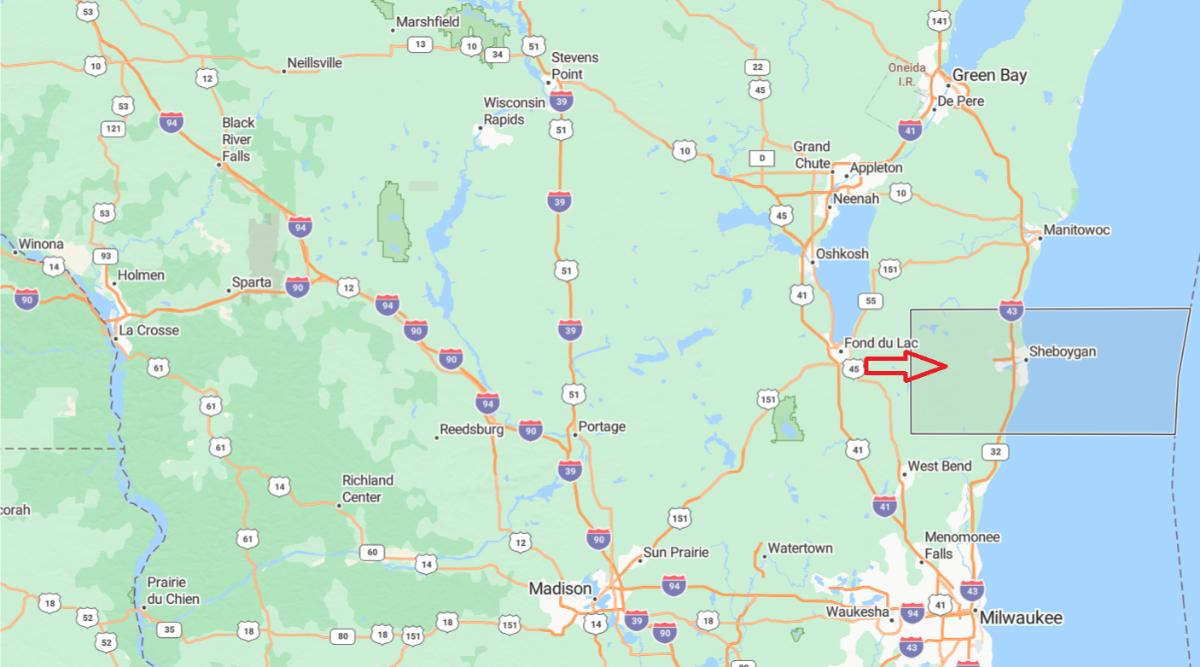
Sheboygan County is located in eastern Wisconsin, along the western shore of Lake Michigan. The county seat is Sheboygan, situated about 50 miles north of Milwaukee and 60 miles south of Green Bay. Major routes like Interstate 43 and State Highway 23 provide strong connections to nearby cities.
The county is bordered by Manitowoc, Calumet, Fond du Lac, and Ozaukee counties. It features a mix of industrial centers, rural farmland, and lakeshore communities, with attractions like Kohler-Andrae State Park and the Road America racetrack. With a population of over 115,000, Sheboygan County blends manufacturing, tourism, and natural beauty.
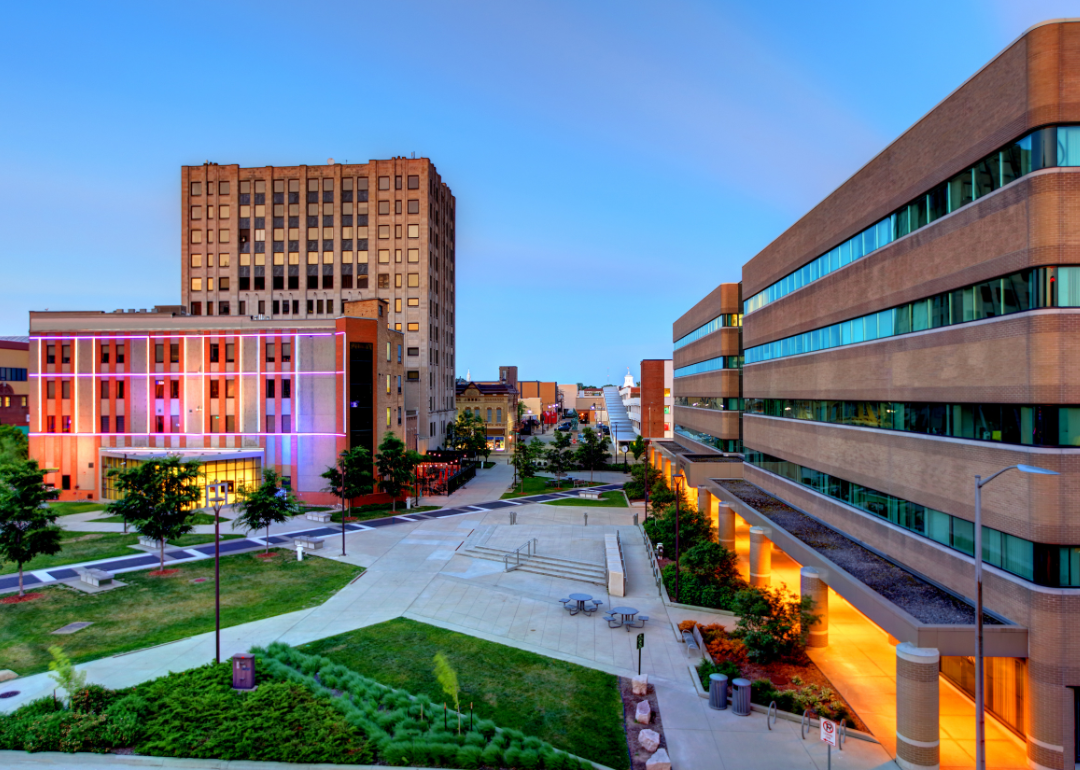
#12. Outagamie County, Wisconsin
– Overall Rank: 399
– Population: 190,611
– Median household income: $78,705
– Median home value: $224,100 (71% own)
– Median rent: $941 (29% rent)
– Top public schools: J.R. Gerritts Middle School (grade A), Mapleview Intermediate School (grade A), Janssen Elementary School (grade A minus)
– Top private schools: Xavier Catholic Schools (grade A), Fox Valley Lutheran High School (grade B), Immanuel Evangelical Lutheran School (grade unavailable)
– Top places: Appleton (grade A), Kimberly (grade A), Combined Locks (grade A)
About
Outagamie County, situated in northeast Wisconsin, is anchored by its largest city, Appleton, which serves as a vibrant cultural and economic center known for its arts scene, historic architecture, and access to the Fox River. The county benefits from a strong manufacturing and service-based economy, with employers spanning from paper production to healthcare, education, and retail. Outagamie also enjoys excellent transportation links, including highways and regional airports, making it a key hub in the Fox Cities region.
Beyond the urban core, Outagamie County features a balanced mix of suburban neighborhoods and rural landscapes, with abundant parks and recreational waterways like the Wolf and Fox rivers. Communities such as Kimberly, Kaukauna, Grand Chute, and Seymour each bring their own local traditions, schools, and community festivals, reinforcing the county’s family-friendly appeal. With steady population growth, ongoing infrastructure improvements, and a strong emphasis on managing growth alongside preserving green space, Outagamie County continues to evolve as a well-rounded and forward-looking community.
Where is Outagamie County?
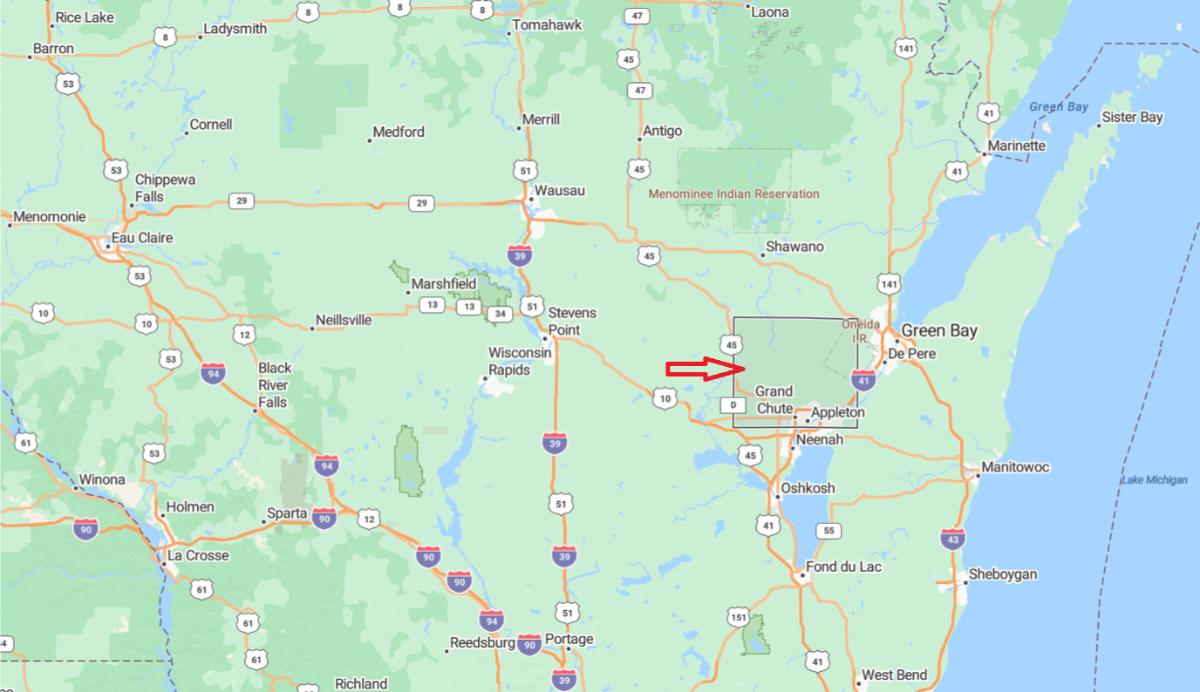
Outagamie County is located in east-central Wisconsin, with the city of Appleton serving as the county seat and largest city. It lies about 30 miles southwest of Green Bay and is accessible via major highways like U.S. Route 41 and State Highway 441. The county covers approximately 640 square miles of urban, suburban, and rural areas.
It is bordered by Brown, Calumet, Winnebago, Waupaca, and Shawano counties. Outagamie County is part of the Fox River Valley region and is known for its strong economy, cultural amenities, and parks. With a population of over 190,000, it is one of Wisconsin’s most populous and economically vibrant counties.
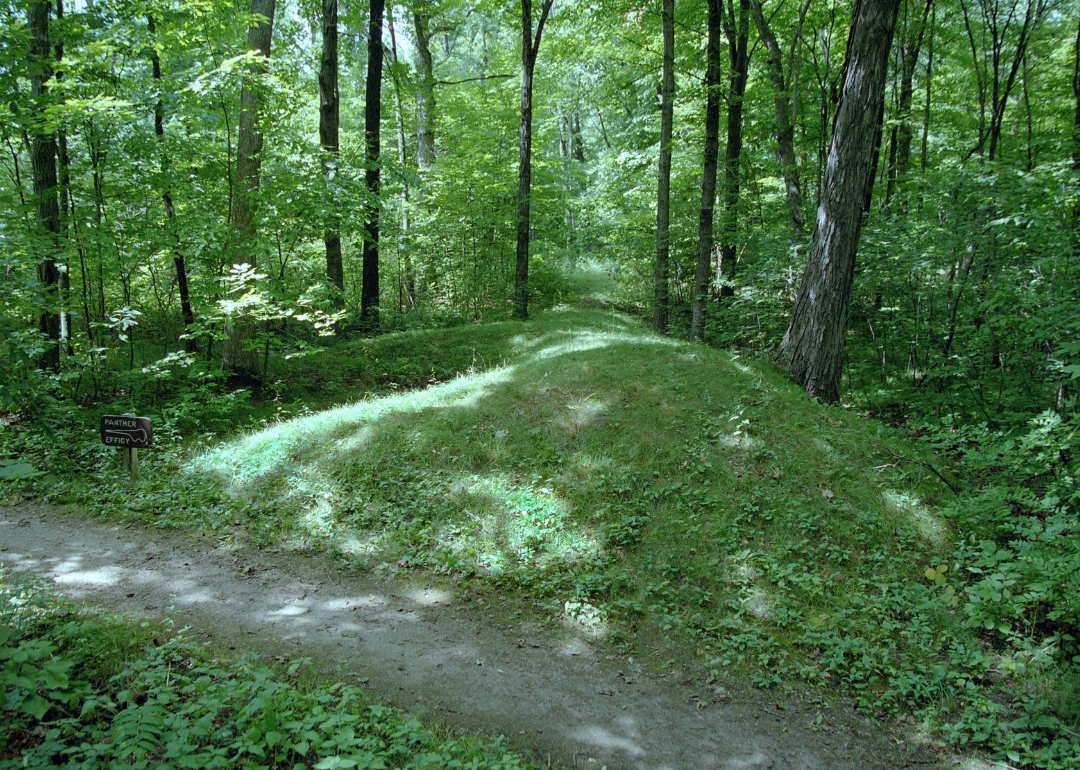
#11. Washington County, Wisconsin
– Overall Rank: 378
– Population: 136,842
– Median household income: $91,915
– Median home value: $293,300 (77% own)
– Median rent: $1,073 (23% rent)
– Top public schools: Slinger Elementary School (grade A), Addison Elementary School (grade A), Slinger Middle School (grade A)
– Top private schools: Living Word Lutheran High School (grade A minus), Kettle Moraine Lutheran High School (grade B), St. Augustine School (grade B minus)
– Top places: Germantown (grade A), Slinger (grade A), Richfield (grade A minus)
About
Washington County, located in southeastern Wisconsin just north of Milwaukee, combines rural charm with suburban convenience. The county seat, West Bend, anchors the region with its historic downtown, cultural venues like the Washington County Fair Park, and a burgeoning business community. Agriculture remains a cornerstone of the local economy, with sprawling dairy farms, crop fields, and farmers’ markets highlighting the county’s agrarian heritage.
In addition to its agricultural roots, Washington County offers numerous recreational and natural attractions, including the Kettle Moraine State Forest and the scenic Ice Age Trail, ideal for hiking and winter sports. Smaller communities such as Jackson, Hartford, and Slinger each bring their own annual events, festivals, and tight-knit community traditions. With a steady influx of residential development, upgraded infrastructure, and a focus on preserving open spaces, Washington County continues to grow while maintaining its blend of rural and suburban character.
Where is Washington County?

Washington County is located in southeastern Wisconsin, just northwest of Milwaukee. The county seat is West Bend, which lies about 30 miles north of downtown Milwaukee. Major roads like U.S. Highway 45 and State Highway 33 run through the area, providing strong regional access.
It is bordered by Ozaukee, Waukesha, Dodge, and Fond du Lac counties. The county features a mix of suburban communities, farmland, and natural areas like the Kettle Moraine State Forest. With a population of around 137,000, Washington County offers a blend of rural charm and suburban convenience near the Milwaukee metro area.

#10. Winnebago County, Wisconsin
– Overall Rank: 373
– Population: 171,197
– Median household income: $70,041
– Median home value: $190,600 (66% own)
– Median rent: $880 (34% rent)
– Top public schools: Winneconne Middle School (grade A), Lakeview Elementary School (grade A minus), Horace Mann Middle School (grade A minus)
– Top private schools: St. Mary Catholic High School (grade A minus), Lourdes Academy (grade A minus), Valley Christian School (grade B+)
– Top places: Winneconne (grade A), Neenah (grade A), Oshkosh (grade A minus)
About
Winnebago County, nestled in east-central Wisconsin along the shores of Lake Winnebago, merges urban sophistication with scenic waterways. The county seat, Oshkosh, is known for its historic downtown, vibrant arts scene, and the annual EAA AirVenture—a massive airshow that draws aviation enthusiasts from around the globe. The county’s economy is diverse, combining manufacturing, healthcare, education, and retail, bolstered by institutions like the University of Wisconsin–Oshkosh.
Beyond Oshkosh, the county’s landscape unfolds across waterfront towns such as Neenah and Menasha, both perched on the Fox River and celebrated for their riverfront parks, trails, and community festivals. Rural areas in Winnebago County are marked by farmland, conservation lands, and access to water-based recreation like boating, fishing, and kayaking. With ongoing investment in infrastructure, a growing population, and a shared commitment to preserving its natural and historic assets, Winnebago County continues to offer a balanced blend of urban amenities and outdoor charm.
Where is Winnebago County?
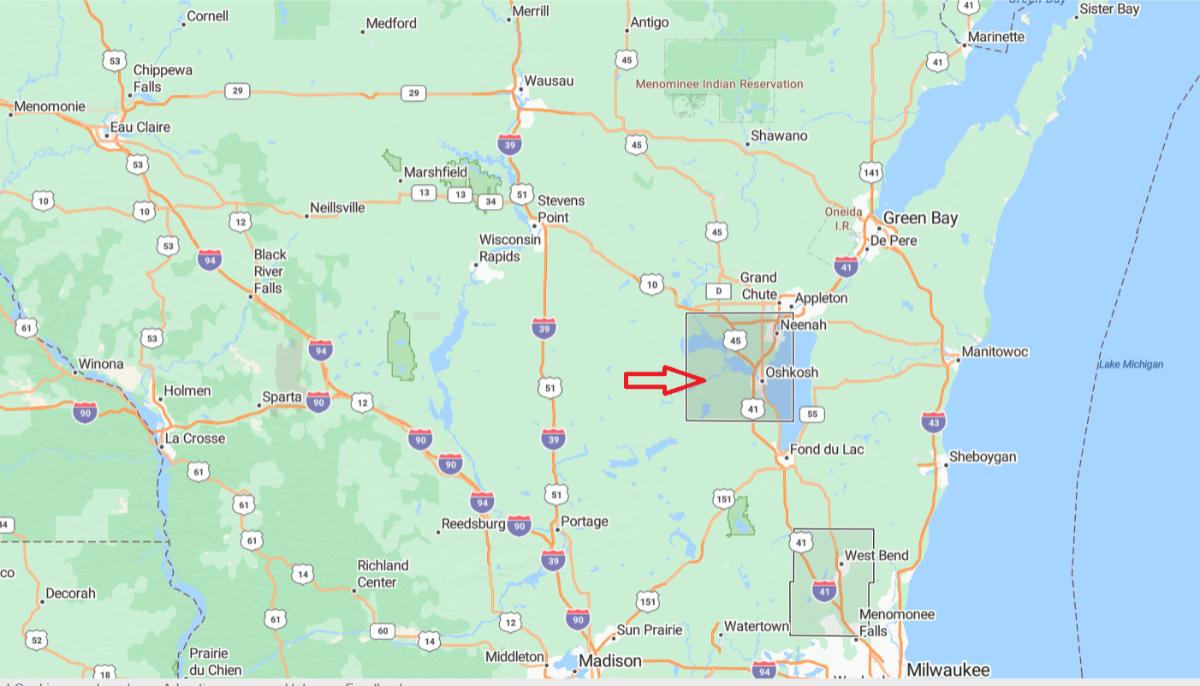
Winnebago County, located in east-central Wisconsin along the southern shore of Lake Winnebago, seamlessly blends urban vibrancy with scenic natural surroundings. Its county seat, Oshkosh, is recognized for its historic downtown, thriving arts and cultural scene, and the globally renowned EAA AirVenture airshow. The local economy is diverse, encompassing manufacturing, healthcare, education, and retail—bolstered significantly by the presence of the University of Wisconsin–Oshkosh.
Outside of Oshkosh, communities such as Neenah and Menasha fringe the Fox River and offer charming riverfront parks, walking trails, and lively festivals. The county’s rural landscape is dominated by fertile agricultural lands, conservation areas, and plentiful opportunities for boating, fishing, and other water-based recreation on its lakes and rivers. With concerted efforts toward infrastructure improvements, growing residential development, and a strong emphasis on preserving both its natural beauty and historic character, Winnebago County continues to thrive as a balanced and welcoming region.
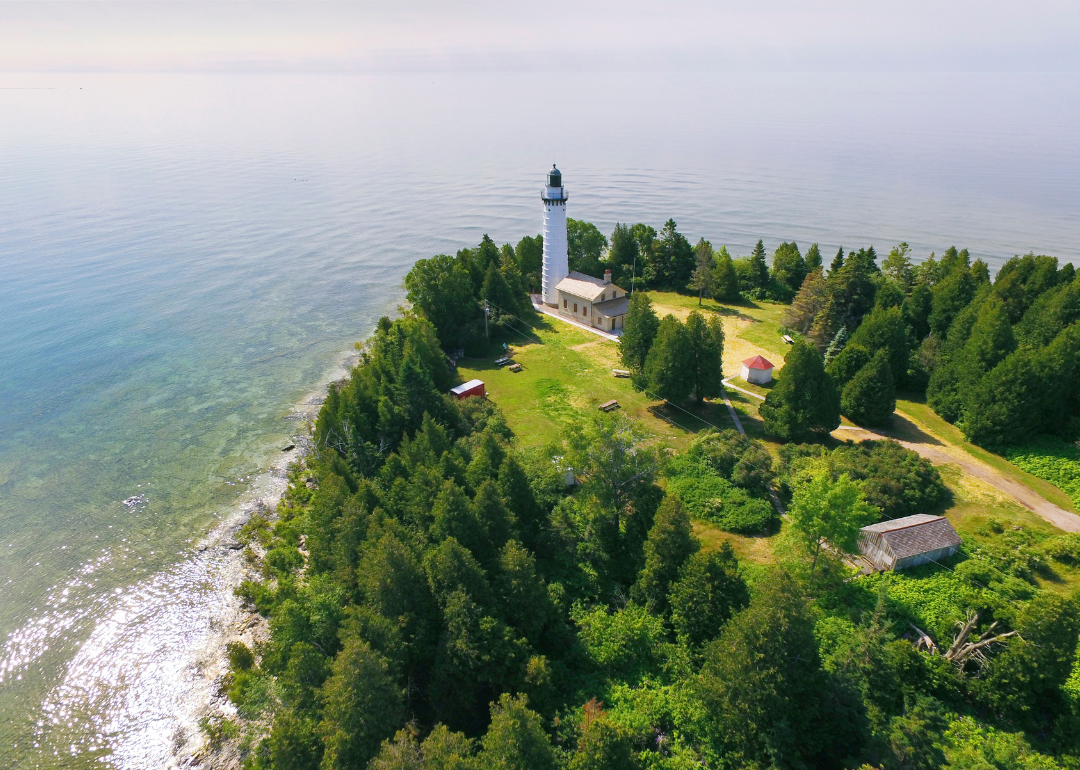
#9. Door County, Wisconsin
– Overall Rank: 370
– Population: 30,038
– Median household income: $68,257
– Median home value: $273,300 (81% own)
– Median rent: $949 (19% rent)
– Top public schools: Sevastopol Middle School (grade A), Gibraltar High School (grade A), Gibraltar Elementary School (grade A)
– Top private schools: St. John Bosco Catholic School (grade unavailable), St. Peter’s Lutheran School (grade unavailable), Zion Lutheran School (grade unavailable)
– Top places: Sturgeon Bay (grade B+), Ellison Bay (grade A), Ephraim (grade A)
About
Door County, located on a peninsula between Green Bay and Lake Michigan, is renowned for its scenic beauty, charming coastal towns, and vibrant tourism industry. The county features more than 300 miles of shoreline, dotted with lighthouses, beaches, and harbors that attract visitors year-round. Communities like Sturgeon Bay, Fish Creek, and Ephraim offer a blend of historic architecture, boutique shopping, and seasonal festivals that highlight local arts and food.
Outdoor recreation is central to Door County’s appeal, with five state parks and dozens of nature preserves providing opportunities for hiking, kayaking, camping, and birdwatching. The area is also known for its cherry orchards, vineyards, and farm-to-table dining experiences that reflect the region’s agricultural roots. With its blend of natural charm, cultural richness, and small-town hospitality, Door County remains one of Wisconsin’s most beloved destinations for both residents and tourists.
Where is Door County?
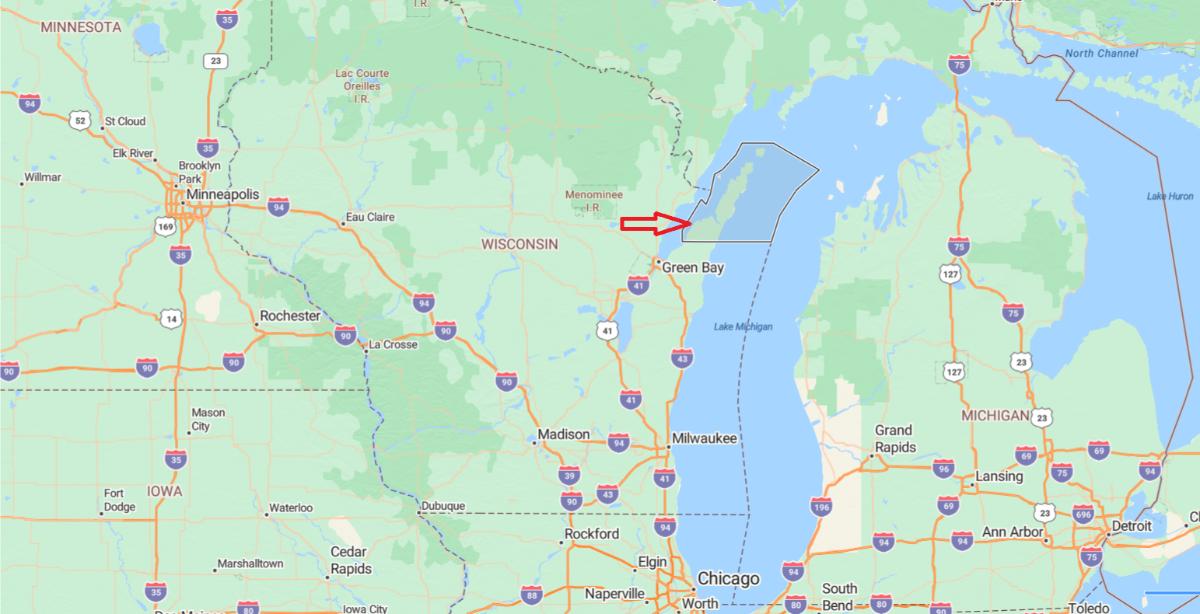
Door County is located in northeastern Wisconsin, on a peninsula between Green Bay and Lake Michigan. The county seat is Sturgeon Bay, situated about 45 miles northeast of Green Bay. State Highways 42 and 57 run through the area, connecting its small towns and waterfront communities.
It is bordered by Kewaunee County to the south and surrounded by water on three sides, giving it a coastal feel. Door County is known for its scenic shoreline, lighthouses, state parks, and cherry orchards. With a population of around 30,000, it is a popular tourist destination offering a peaceful, nature-rich environment.

#8. St. Croix County, Wisconsin
– Overall Rank: 355
– Population: 93,752
– Median household income: $97,950
– Median home value: $323,900 (79% own)
– Median rent: $1,127 (21% rent)
– Top public schools: Houlton Elementary School (grade A), North Hudson Elementary School (grade A), River Crest Elementary School (grade A)
– Top private schools: Trinity Academy (grade unavailable), St. Patrick School (grade unavailable), St. Mary’s School (grade unavailable)
– Top places: North Hudson (grade A), River Falls (grade A), Hudson (grade A)
About
St. Croix County, located in western Wisconsin along the scenic St. Croix River, offers a harmonious blend of rural landscapes and small-town charm. The county seat, Hudson, is celebrated for its historic downtown, vibrant arts scene, and riverfront parks that draw both locals and visitors. Agriculture plays an important role in the area’s economy, with dairy farms, orchards, and produce operations rooted in the county’s rich farmland.
Beyond Hudson, communities like New Richmond, River Falls, and Somerset contribute their own unique character through seasonal festivals, local breweries, and community-supported markets. The county takes pride in its outdoor recreation opportunities—boating, hiking, biking, and winter sports abound, especially along river corridors and in parklands. With a steady rate of residential development, improving infrastructure, and a focus on preserving green space and rural heritage, St. Croix County continues to thrive as a vibrant and welcoming region.
Where is St. Croix County?

St. Croix County is located in western Wisconsin, along the Minnesota border and the scenic St. Croix River. The county seat is Hudson, situated about 20 miles east of St. Paul, Minnesota. Major highways like Interstate 94 and U.S. Highway 12 provide direct access to the Twin Cities metro area.
It is bordered by Pierce, Dunn, Polk, and Barron counties in Wisconsin, and Washington County in Minnesota. St. Croix County blends rural landscapes with growing suburban communities, especially near Hudson and River Falls. With a population of over 95,000, it is one of the fastest-growing counties in the state due to its proximity to Minneapolis–St. Paul.
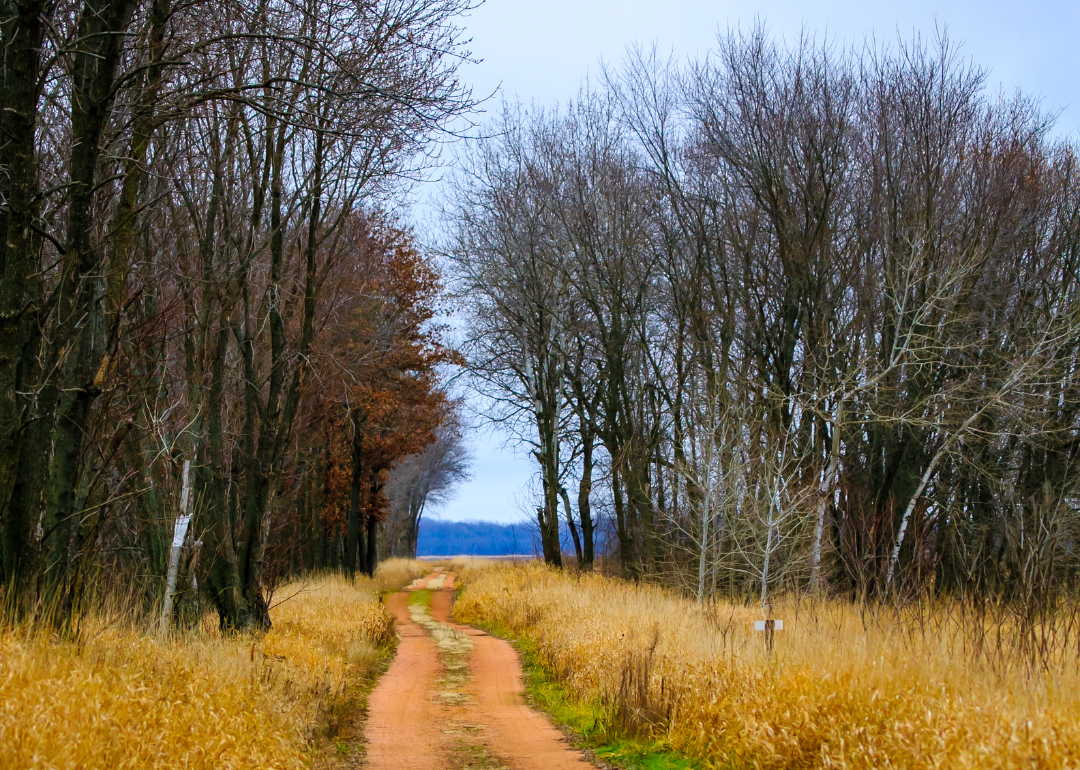
#7. Portage County, Wisconsin
– Overall Rank: 341
– Population: 70,281
– Median household income: $71,301
– Median home value: $214,700 (70% own)
– Median rent: $876 (30% rent)
– Top public schools: Bannach Elementary School (grade A minus), McDill Elementary School (grade B+), Kennedy Elementary School (grade B+)
– Top private schools: Pacelli Catholic High School (grade A minus), Stevens Point Christian Academy (grade C minus), Pacelli Catholic Schools – Tim Copps Early Childhood Center (grade unavailable)
– Top places: Plover (grade A), Stevens Point (grade A), Whiting (grade A minus)
About
Portage County, located in central Wisconsin, is anchored by its largest city and county seat, Stevens Point, which serves as a cultural and economic hub. Known for its lively downtown, riverfront parks along the Wisconsin River, and community events, Stevens Point brings energy and regional pride to the county. The local economy is diverse, with education, manufacturing, agriculture, and healthcare all playing significant roles.
Outside the urban center, Portage County’s landscape is a mix of forests, farmland, and lakes, offering opportunities for outdoor recreation such as hunting, fishing, snowmobiling, and hiking. Charming small towns like Plover, Amherst, and Rosholt contribute local festivals, farmers’ markets, and a tight-knit community spirit. With ongoing development in infrastructure, growth in residential and commercial sectors, and an emphasis on conserving natural areas, Portage County maintains a balanced and vibrant appeal.
Where is Portage County?
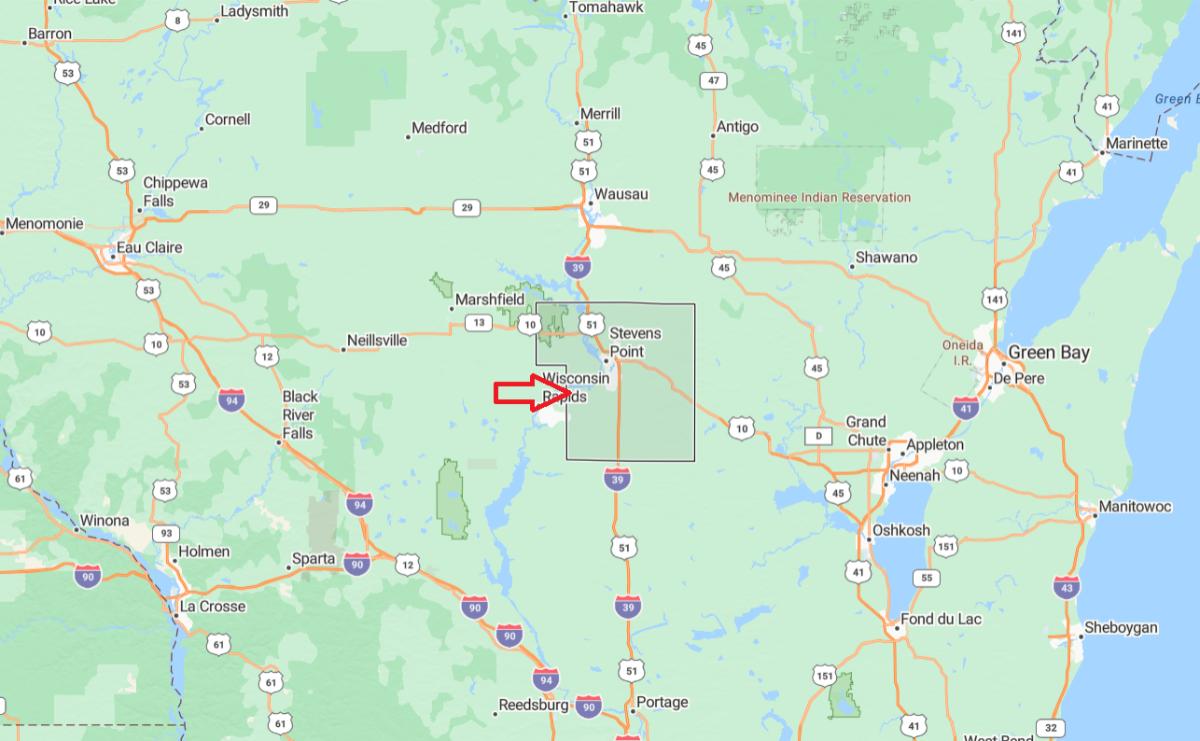
Portage County is located in central Wisconsin, with the city of Stevens Point serving as the county seat. It lies about 110 miles north of Madison and is well-connected by Interstate 39 and U.S. Highway 10. The county covers approximately 823 square miles of land and water, with a mix of urban and rural areas.
It is bordered by Marathon, Waupaca, Waushara, Adams, and Wood counties. Portage County is known for its natural beauty, including rivers, parks, and trails like the Green Circle Trail. With a population of around 70,000, it combines educational, cultural, and outdoor attractions in a centrally located region.
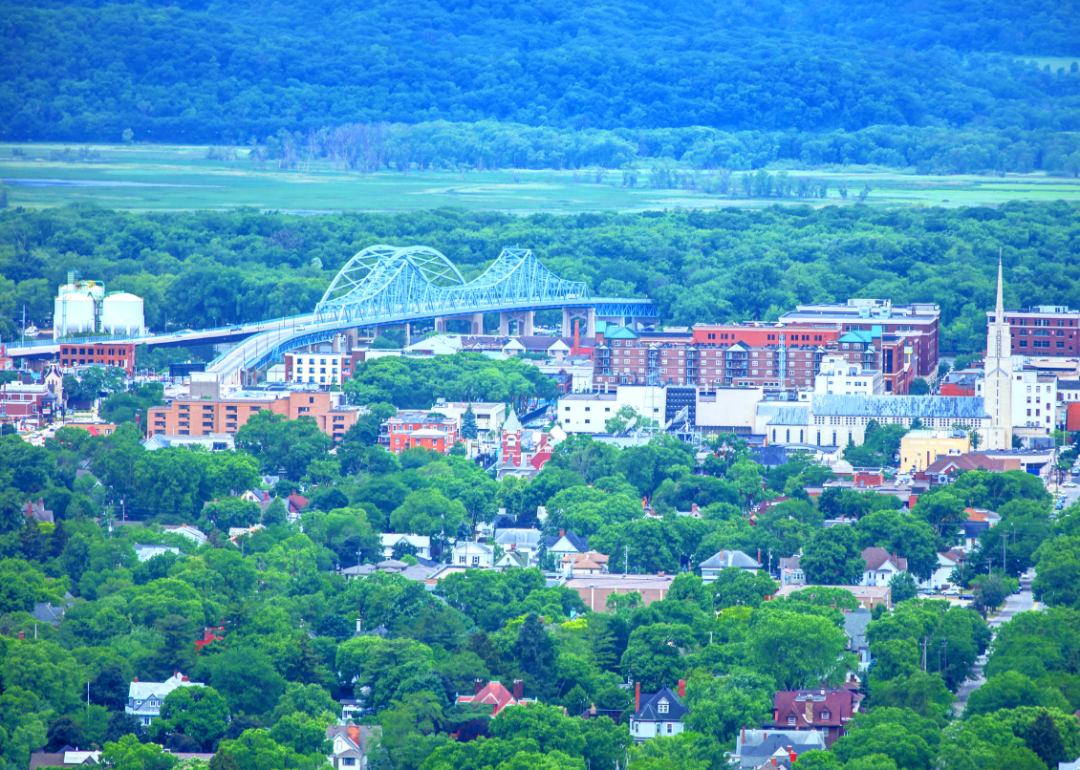
#6. La Crosse County, Wisconsin
– Overall Rank: 313
– Population: 120,216
– Median household income: $68,731
– Median home value: $226,600 (62% own)
– Median rent: $984 (38% rent)
– Top public schools: School of Technology and Arts I (grade A minus), Eagle Bluff Elementary School (grade A minus), Onalaska High School (grade A minus)
– Top private schools: Providence Academy (grade A minus), Aquinas High School (grade A minus), Luther High School (grade B+)
– Top places: Onalaska (grade A), West Salem (grade A minus), La Crosse (grade B+)
About
La Crosse County, nestled along the Mississippi River in western Wisconsin, features a dynamic urban center in the city of La Crosse—home to a thriving downtown, riverfront parks, and a renowned arts and music scene. The economy is diverse, anchored by healthcare, education (with the University of Wisconsin–La Crosse), manufacturing, and tourism. Excellent transportation access—including bridges across the Mississippi and regional air and rail connections—strengthens its position as a regional hub.
Beyond the city, the county is dotted with scenic bluffs, wooded hills, and river valleys that provide ample outdoor recreation such as hiking, biking, boating, and birdwatching. Smaller communities like Onalaska, Holmen, and West Salem each add distinct character through local festivals, family-friendly events, and community markets. With ongoing investments in infrastructure, sustainable development, and the preservation of both natural landscapes and historic neighborhoods, La Crosse County continues to flourish as a welcoming and well-rounded region.
Where is La Crosse County?
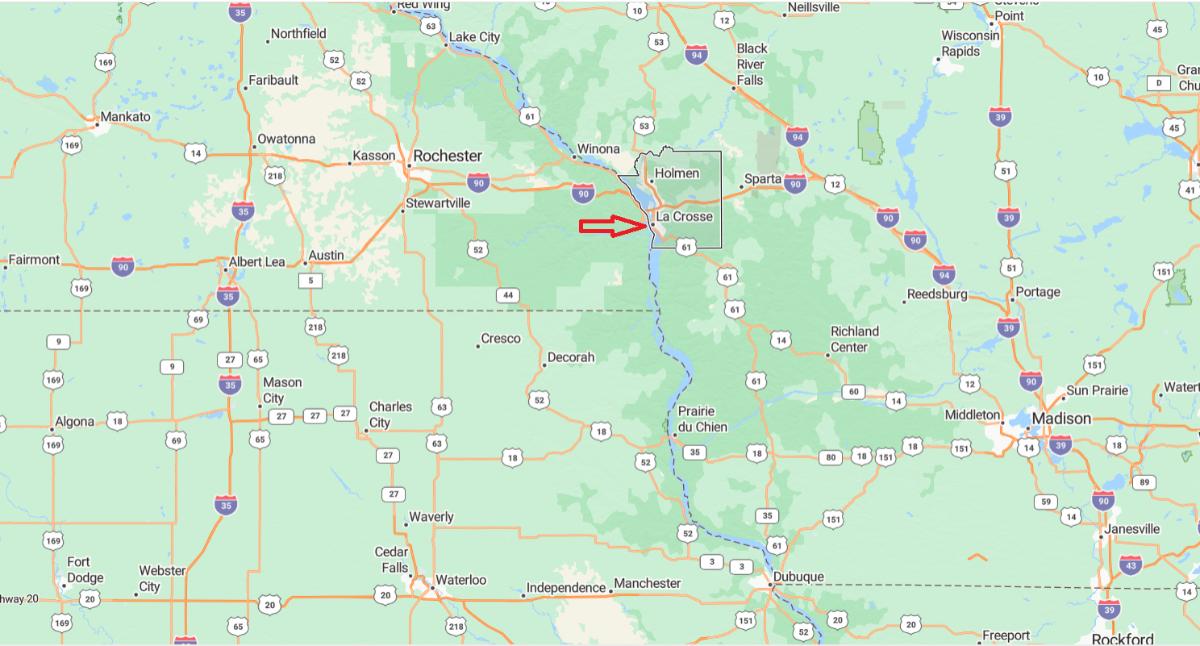
La Crosse County is located in western Wisconsin, along the Mississippi River and the border with Minnesota. The county seat and largest city is La Crosse, situated about 140 miles northwest of Madison. Major highways like Interstate 90 and U.S. Highways 14 and 61 run through the area, providing strong regional access.
It is bordered by Trempealeau, Jackson, Monroe, and Vernon counties in Wisconsin, and Houston County in Minnesota. The county features river bluffs, parks, and the University of Wisconsin–La Crosse. With a population of over 120,000, La Crosse County serves as a cultural, educational, and economic hub for the region.
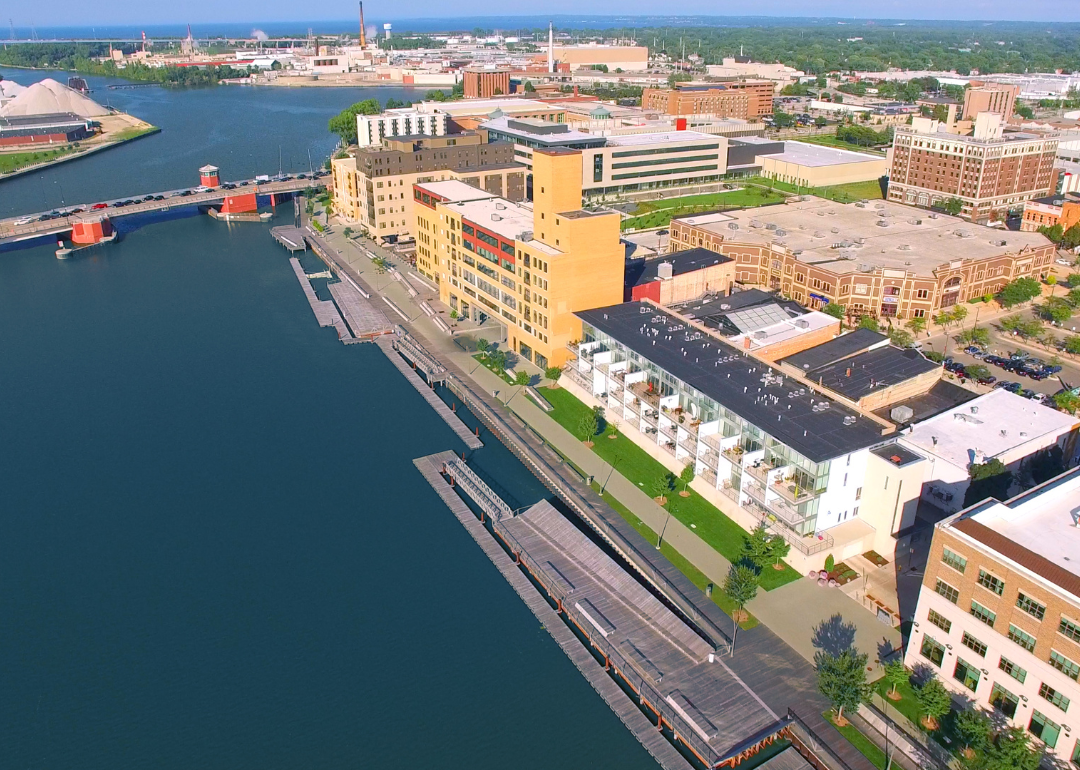
#5. Brown County, Wisconsin
– Overall Rank: 228
– Population: 268,393
– Median household income: $74,066
– Median home value: $226,500 (65% own)
– Median rent: $935 (35% rent)
– Top public schools: Susie C. Altmayer Elementary School (grade A), Wrightstown Middle School (grade A), West De Pere High School (grade A)
– Top private schools: Notre Dame de la Baie Academy (grade A minus), Northeastern Wisconsin Lutheran High School (grade B+), Providence Academy (grade B)
– Top places: Hobart (grade A), De Pere (grade A), Allouez (grade A)
About
Brown County, situated in northeastern Wisconsin along the shores of Green Bay, is anchored by its county seat, Green Bay—a city celebrated for its deep ties to American football and a revitalized downtown. The local economy is diverse, encompassing manufacturing, paper production, healthcare, education, and a growing tech sector. With a rich heritage reflected in historic sites, cultural festivals, and waterfront attractions, the county blends tradition with modern growth.
Outside of Green Bay, communities such as De Pere, Denmark, and Kaukauna offer small-town character, vibrant local markets, and annual events that showcase regional pride. The county’s landscape features rivers, parks, and miles of shoreline, providing abundant recreation opportunities including boating, fishing, hiking, and biking. With steady residential expansion, infrastructure improvements, and a strong emphasis on preserving its civic, cultural, and natural assets, Brown County continues to flourish as a balanced and dynamic region.
Where is Brown County?
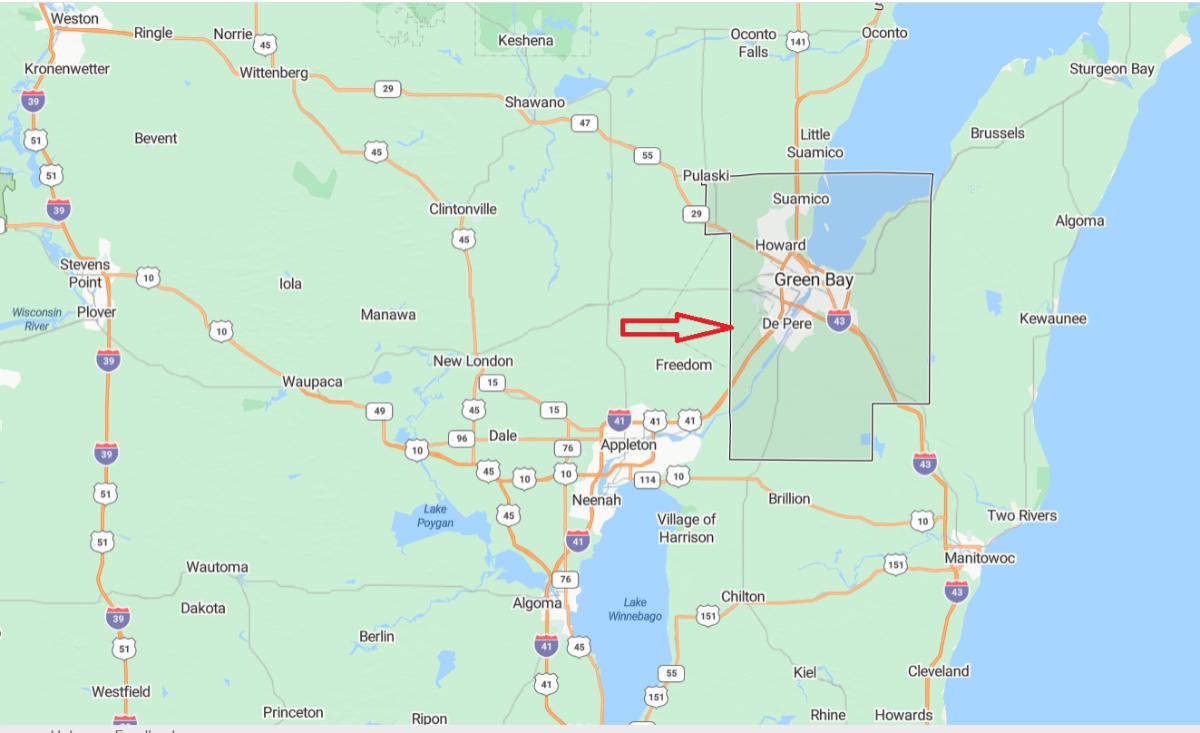
Brown County is located in northeastern Wisconsin, along the western shore of Green Bay, an arm of Lake Michigan. The county seat is Green Bay, which is also its largest city and a major urban center in the state. Major highways like Interstate 41 and U.S. Highway 43 provide excellent connectivity to surrounding regions.
It is bordered by Outagamie, Shawano, Oconto, Kewaunee, and Manitowoc counties. Brown County features a mix of urban areas, farmland, and waterfront spaces, with attractions like Lambeau Field and Bay Beach. With a population of over 270,000, it is one of Wisconsin’s most populous and economically active counties.
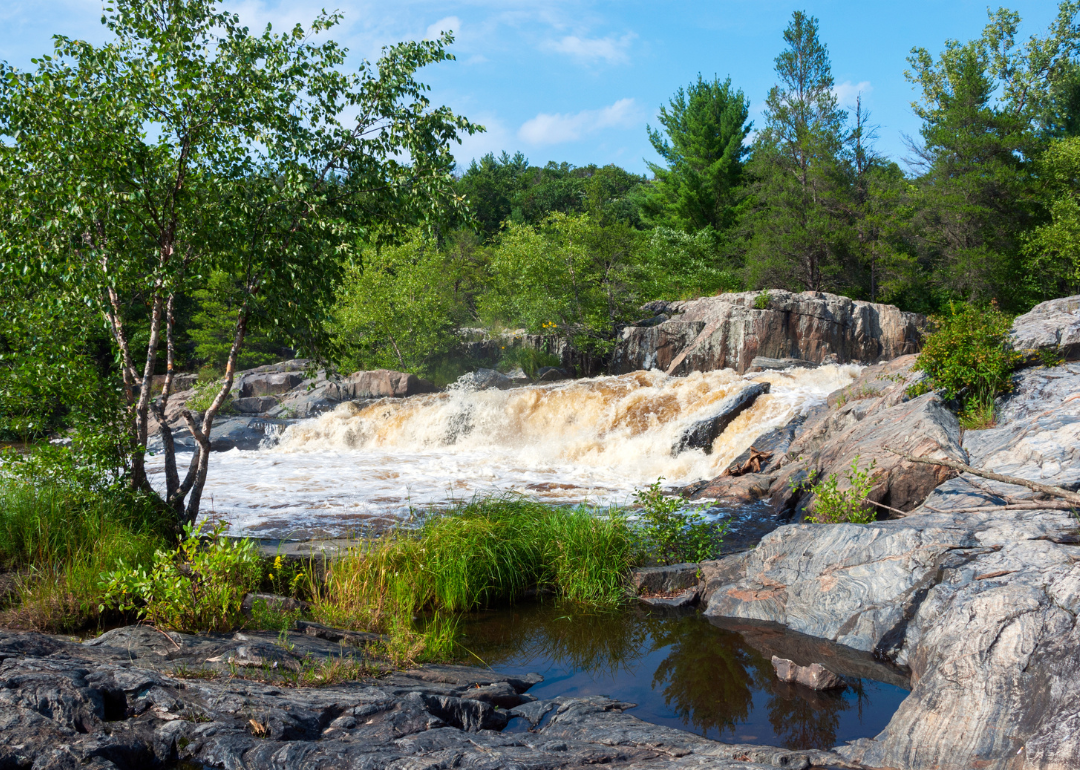
#4. Eau Claire County, Wisconsin
– Overall Rank: 216
– Population: 105,697
– Median household income: $70,127
– Median home value: $226,400 (64% own)
– Median rent: $929 (36% rent)
– Top public schools: Memorial High School (grade A), Altoona Middle School (grade A minus), North High School (grade A minus)
– Top private schools: Bethel Christian School (grade A minus), Regis High School (grade B), Immanuel Lutheran High School (grade B minus)
– Top places: Eau Claire (grade A), Altoona (grade A), Washington (grade A)
About
Eau Claire County, nestled in west-central Wisconsin, centers around its vibrant county seat, Eau Claire, known for a lively arts scene, historic downtown, and the meeting of the Eau Claire and Chippewa Rivers. The local economy is anchored by healthcare, education—with the University of Wisconsin–Eau Claire as a major employer—manufacturing, and a growing number of creative startups. The area benefits from strong transportation links, including highways and the Chippewa Valley Regional Airport, solidifying its role as a regional hub.
Beyond the city’s bounds, Eau Claire County showcases rolling farmland, forested hills, and riverside trails ideal for kayaking, hiking, and cycling. Smaller communities such as Altoona, Mondovi, and Fall Creek contribute local charm through family-friendly festivals, farmers’ markets, and a close-knit sense of community. With targeted infrastructure upgrades, a focus on sustainable growth, and continued investment in cultural and recreational assets, Eau Claire County maintains a well-rounded appeal for residents and visitors alike.
Where is Eau Claire County?
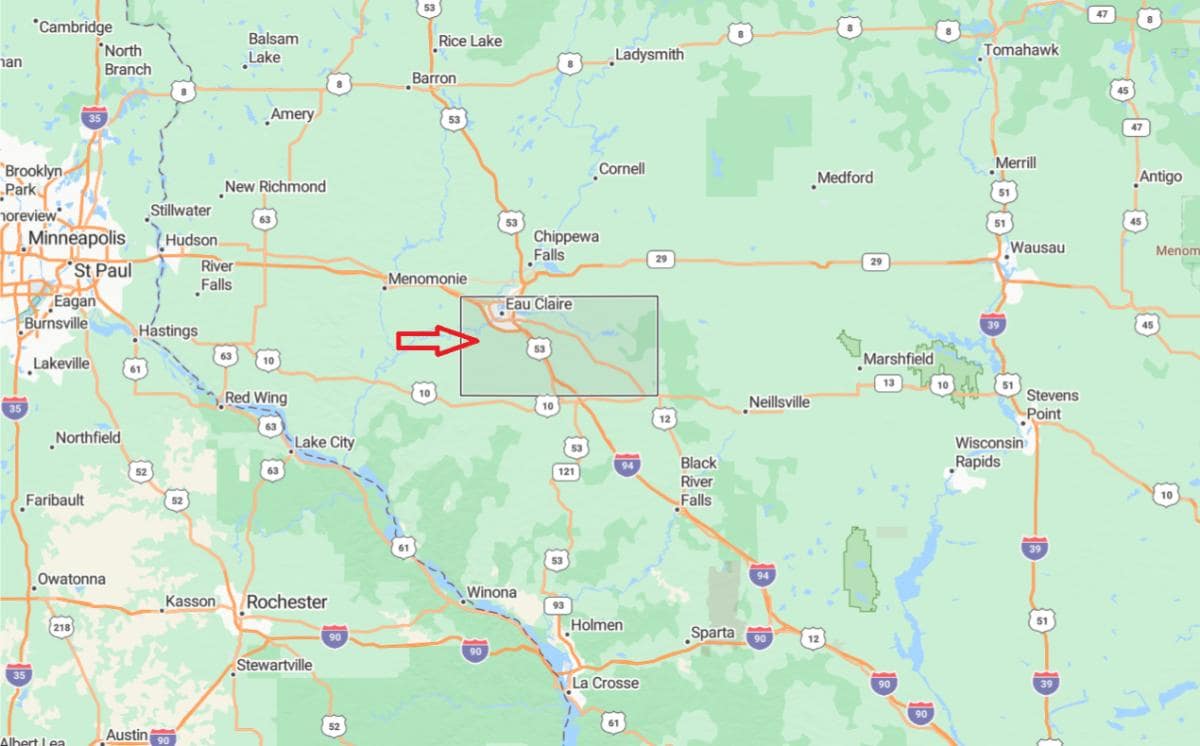
Eau Claire County is located in west-central Wisconsin, with the city of Eau Claire serving as both the county seat and its largest city. The county lies about 90 miles east of Minneapolis–St. Paul and is accessible via Interstate 94 and U.S. Highways 12 and 53. It covers around 645 square miles of urban, suburban, and rural landscapes.
Eau Claire County is bordered by Chippewa, Clark, Jackson, Trempealeau, and Dunn counties. The area is known for its parks, rivers, and a strong arts and music culture centered in Eau Claire. With a population of over 100,000, the county is a regional hub for education, healthcare, and commerce.
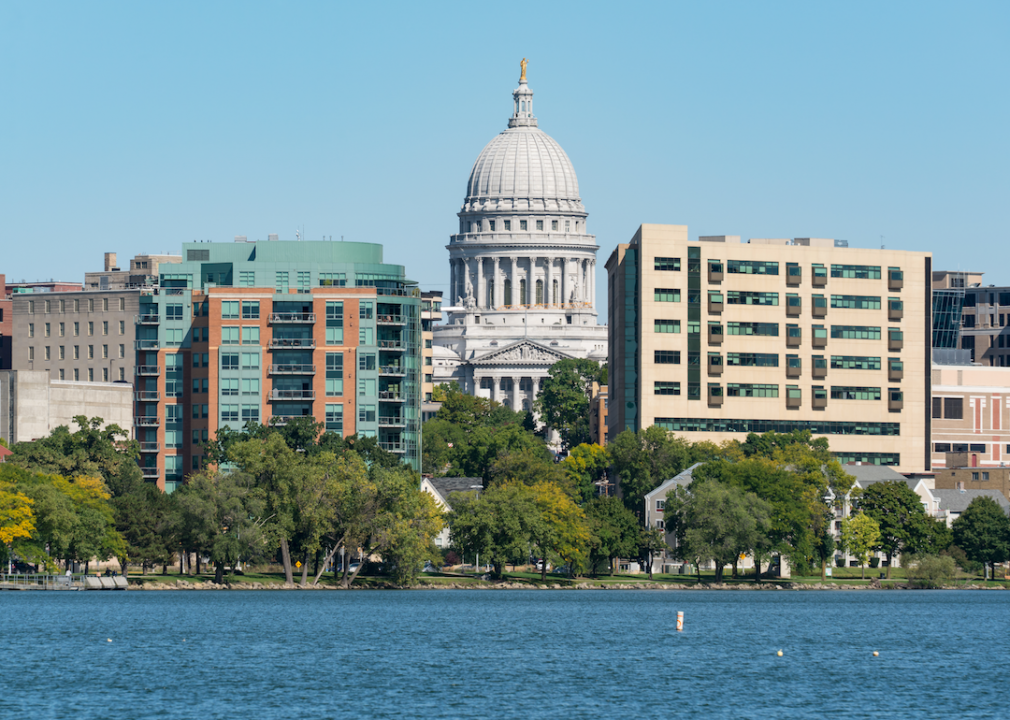
#3. Dane County, Wisconsin
– Overall Rank: 85
– Population: 559,891
– Median household income: $84,297
– Median home value: $342,900 (58% own)
– Median rent: $1,268 (42% rent)
– Top public schools: Pope Farm Elementary School (grade A+), Middleton High School (grade A+), Memorial High School (grade A)
– Top private schools: Madison Country Day School (grade A+), Edgewood High School of the Sacred Heart (grade A+), Abundant Life Christian School (grade A minus)
– Top places: Middleton (grade A+), Shorewood Hills (grade A+), Madison (grade A+)
About
Dane County, located in south-central Wisconsin, is anchored by Madison—the state capital and a dynamic university city nestled on an isthmus between Lakes Mendota and Monona. The county is a fast-growing hub, home to over half a million residents and a highly educated workforce centered around the University of Wisconsin–Madison and numerous tech, healthcare, and government institutions. Its economy is robust and diverse, thriving on innovation across life sciences, information technology, education, and public services.
Beyond Madison, Dane County boasts a balance of suburban and rural charm, featuring thriving communities like Fitchburg, Middleton, and Verona, along with scenic farmland and waterways. Outdoor amenities are abundant, from lakeside trails and parks to natural areas ideal for boating, hiking, and biking. Growth and development are thoughtfully managed to preserve green space and support vibrant communities while enhancing infrastructure and cultural offerings.
Where is Dane County?
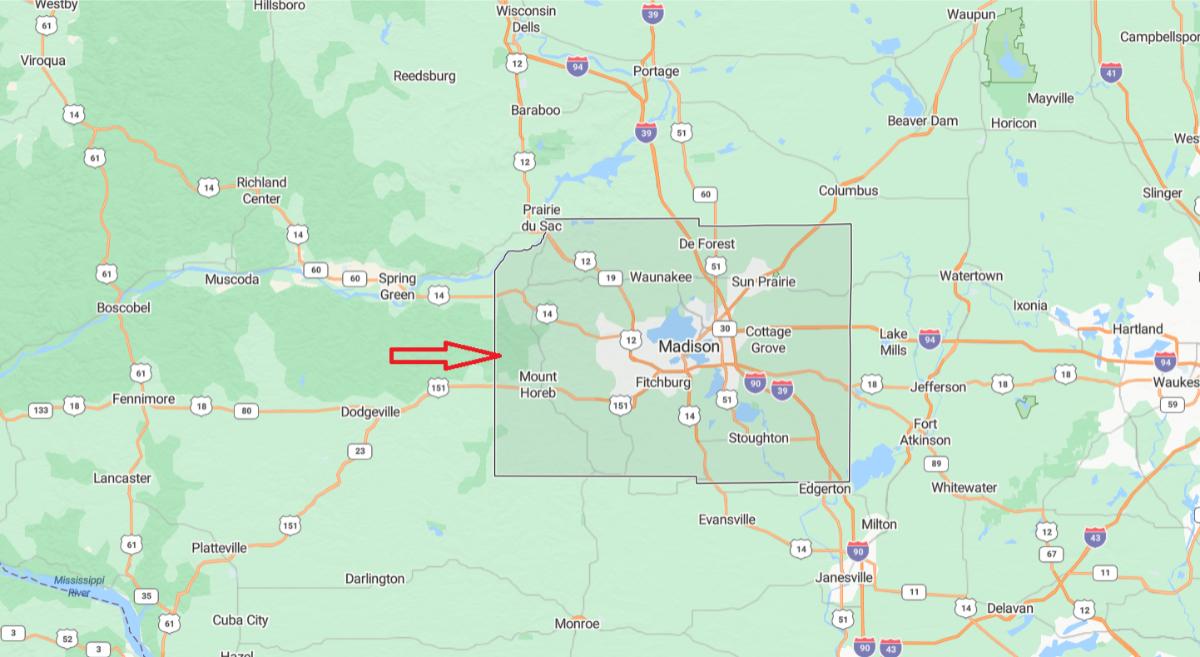
Dane County is located in south-central Wisconsin and is home to Madison, the state capital and the county seat. It lies about 80 miles west of Milwaukee and is well-connected by Interstates 39, 90, and 94. The county spans approximately 1,238 square miles, featuring a mix of urban, suburban, and rural areas.
It is bordered by Columbia, Dodge, Jefferson, Rock, Green, Iowa, and Sauk counties. Dane County is known for its lakes, parks, and the University of Wisconsin–Madison. With a population of over 550,000, it is one of the most populous and economically vibrant counties in the state.
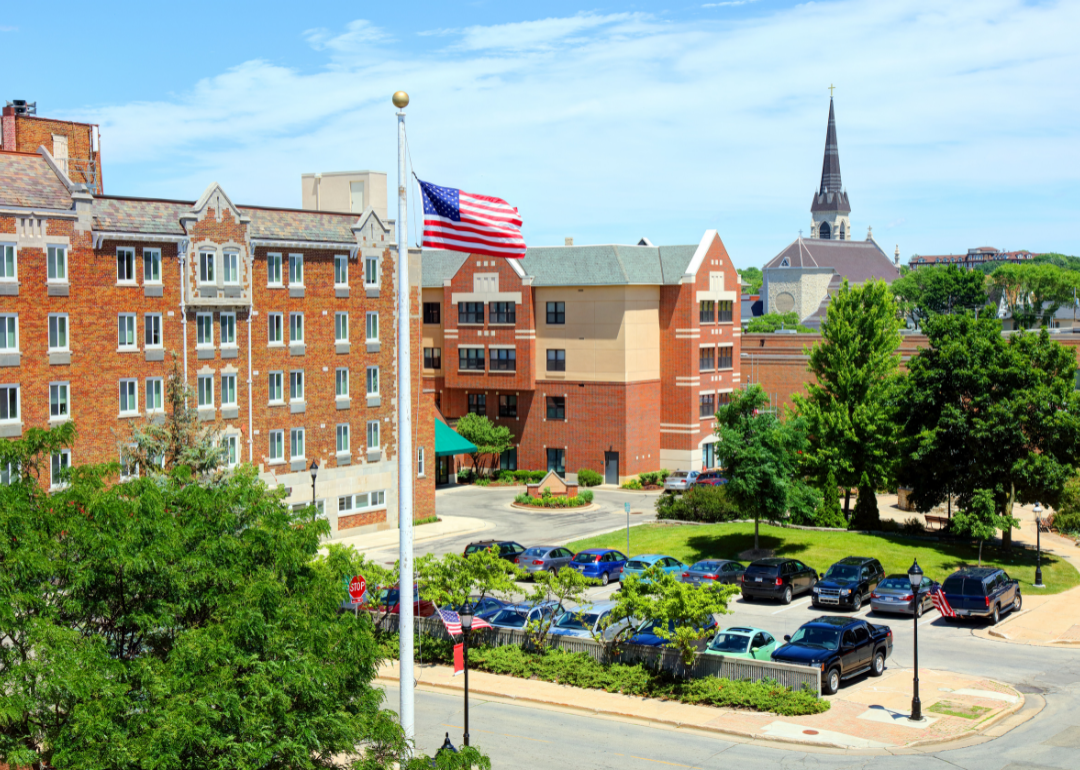
#2. Waukesha County, Wisconsin
– Overall Rank: 42
– Population: 407,290
– Median household income: $101,639
– Median home value: $352,600 (77% own)
– Median rent: $1,235 (23% rent)
– Top public schools: Brookfield East High School (grade A+), Brookfield Central High School (grade A+), Brookfield Elementary School (grade A+)
– Top private schools: Brookfield Academy (grade A+), St. John’s Northwestern Academies (grade A+), University Lake School (grade A+)
– Top places: Elm Grove (grade A+), Brookfield (grade A+), Nashotah (grade A+)
About
Waukesha County, located just west of Milwaukee in southeastern Wisconsin, is a dynamic blend of thriving suburbs, charming small towns, and lush natural spaces. Its county seat, Waukesha, features a bustling downtown with historic architecture, a strong arts community, and lively local events. The county’s economy is anchored by diverse sectors such as professional services, manufacturing, healthcare, and retail.
Beyond Waukesha city, the county offers scenic parks, numerous inland lakes, and miles of trails perfect for hiking, biking, and water sports. Communities like Brookfield, Pewaukee, and Oconomowoc contribute unique character through family-friendly festivals, farmers’ markets, and a strong tradition of civic engagement. With ongoing suburban development, strategic infrastructure investment, and a commitment to preserving green corridors and waterways, Waukesha County continues to grow as a prosperous and welcoming region.
Where is Waukesha County?
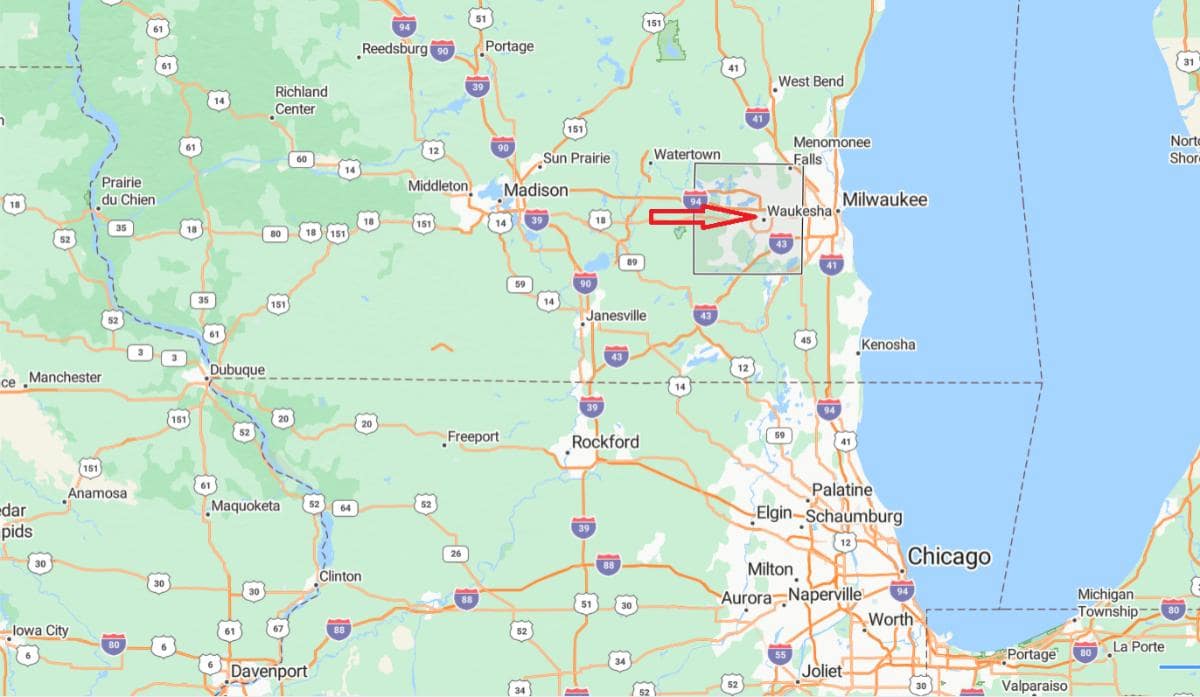
Waukesha County is located in southeastern Wisconsin, just west of Milwaukee. The county seat is Waukesha, and the area is part of the Milwaukee metropolitan region. Major highways like Interstates 94 and 43 run through the county, making it easily accessible.
It is bordered by Milwaukee, Ozaukee, Washington, Dodge, Jefferson, and Walworth counties. Waukesha County features suburban communities, lakes, parks, and golf courses, offering a high quality of life. With a population of over 400,000, it is one of the most populous and affluent counties in Wisconsin.
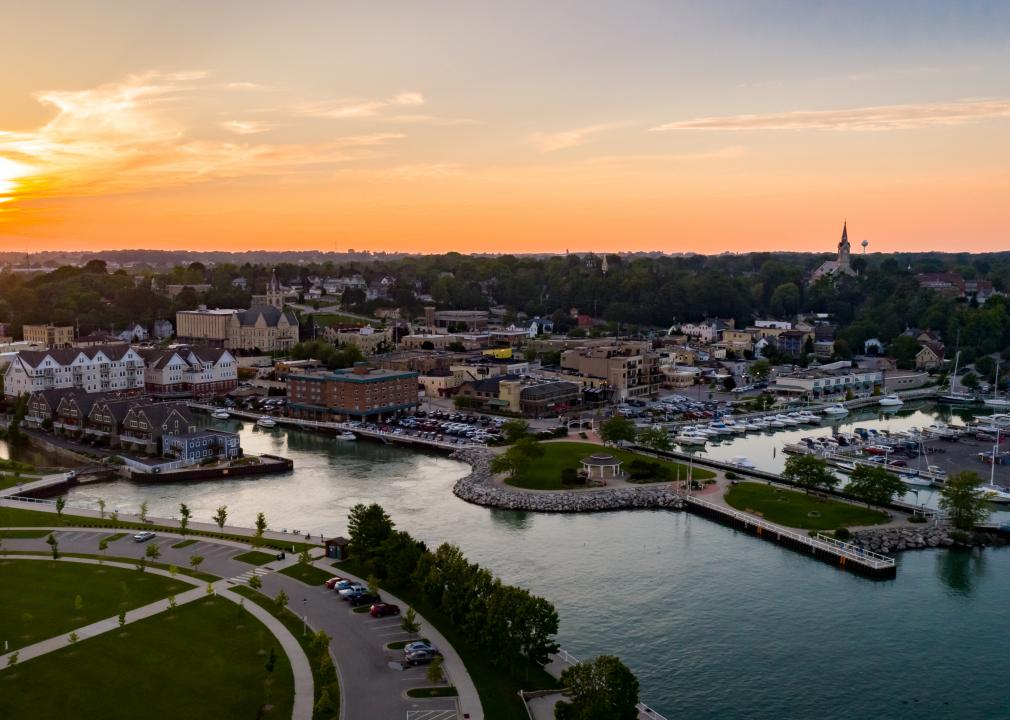
#1. Ozaukee County, Wisconsin
– Overall Rank: 27
– Population: 91,745
– Median household income: $92,258
– Median home value: $344,900 (73% own)
– Median rent: $1,103 (27% rent)
– Top public schools: Lake Shore Middle School (grade A+), Donges Bay Elementary School (grade A+), Parkview Elementary School (grade A+)
– Top private schools: First Immanuel Lutheran School (grade unavailable), St. Francis Borgia School (grade unavailable), Lumen Christi Catholic School (grade unavailable)
– Top places: Mequon (grade A+), Thiensville (grade A+), Cedarburg (grade A+)
About
Ozaukee County, just north of Milwaukee along the western shore of Lake Michigan, offers a blend of suburban calm, picturesque lakeside living, and convenient access to urban amenities. Its county seat, Port Washington, is a quaint harbor town known for its historic downtown, marina, and charming festivals. The county’s economy is diverse and prosperous, supported by professional services, healthcare, light manufacturing, and a growing small business community.
The region is celebrated for its natural beauty and recreational opportunities, with miles of shoreline, scenic parks like Harrington Beach State Park, and extensive biking and hiking trails weaving through woodlands and wetlands. Communities such as Mequon, Cedarburg, and Grafton contribute distinct character through their historic districts, local arts scenes, and active farmers’ markets. With thoughtful infrastructure planning, strong emphasis on environmental preservation, and steady residential growth, Ozaukee County continues to thrive as a desirable and well-balanced place to live.
Where is Ozaukee County?
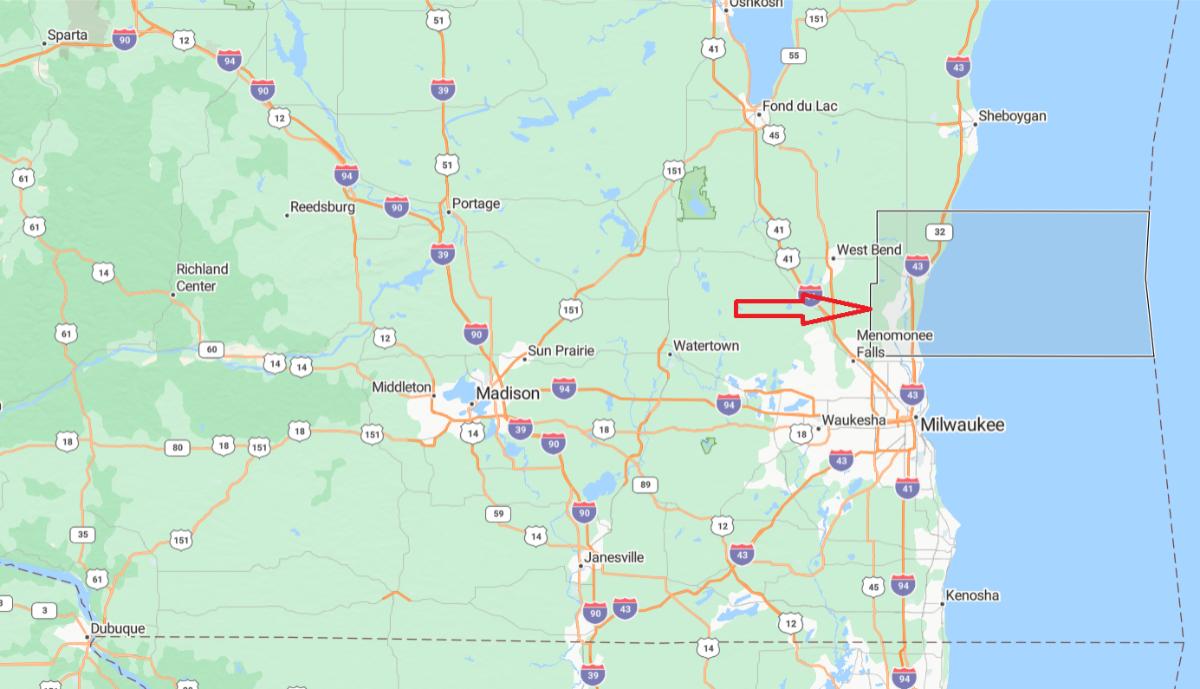
Ozaukee County is located in southeastern Wisconsin, along the western shore of Lake Michigan. The county seat is Port Washington, situated about 25 miles north of Milwaukee. Interstate 43 runs through the county, providing easy access to nearby cities and the lakefront.
It is bordered by Milwaukee, Washington, Sheboygan, and Waukesha counties. Ozaukee County features charming towns, scenic parks, and lakefront attractions. With a population of around 90,000, it is known for its high quality of life and close proximity to the Milwaukee metro area.
This story features data reporting and writing by Elena Cox and is part of a series utilizing data automation across 50 states.
By Stacker





